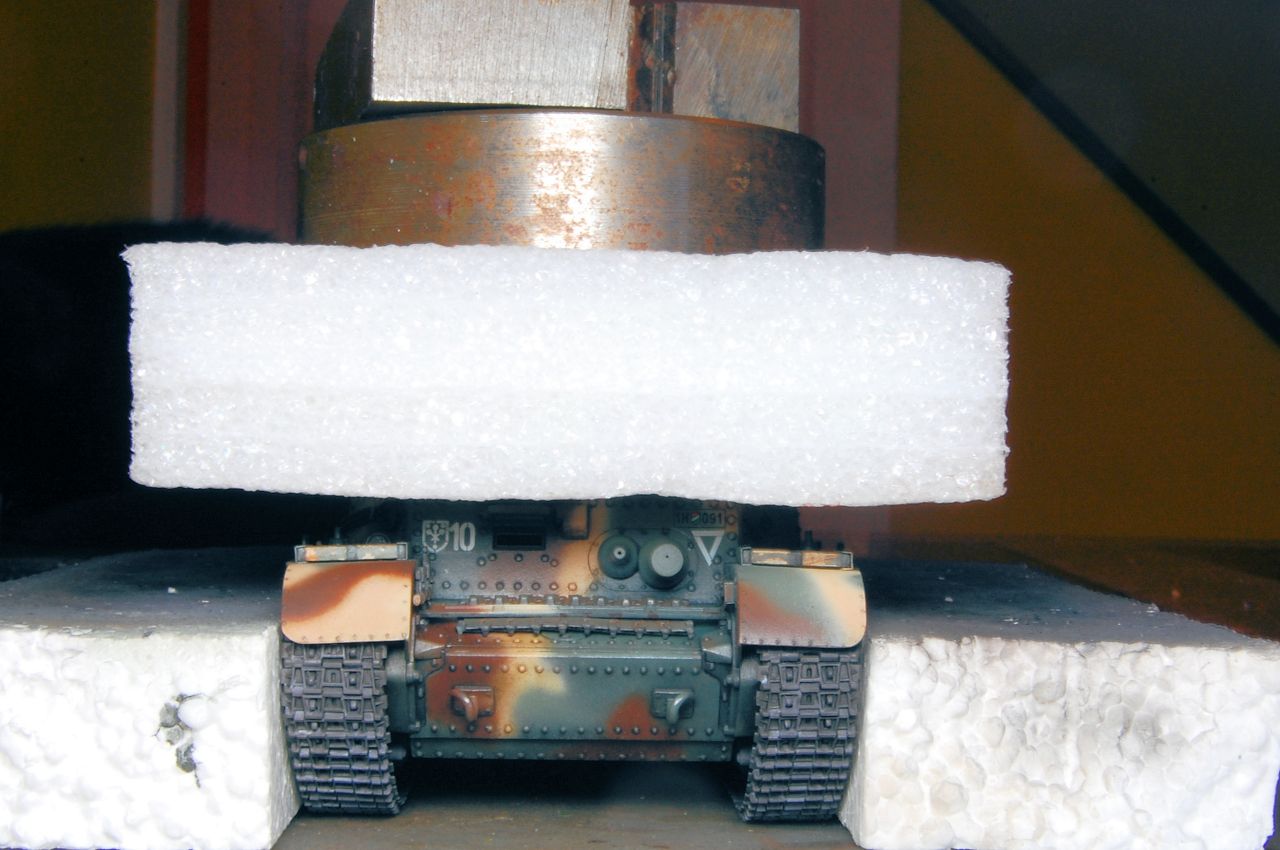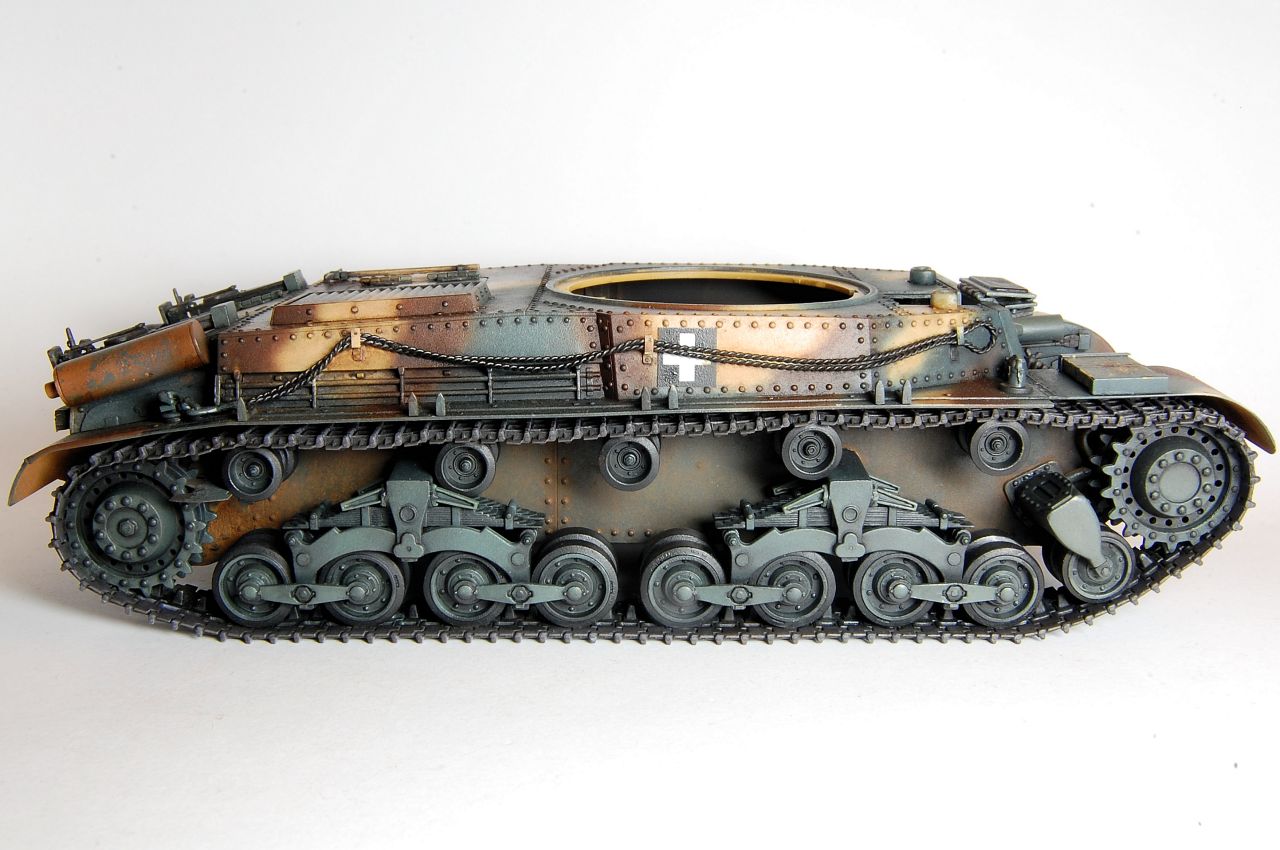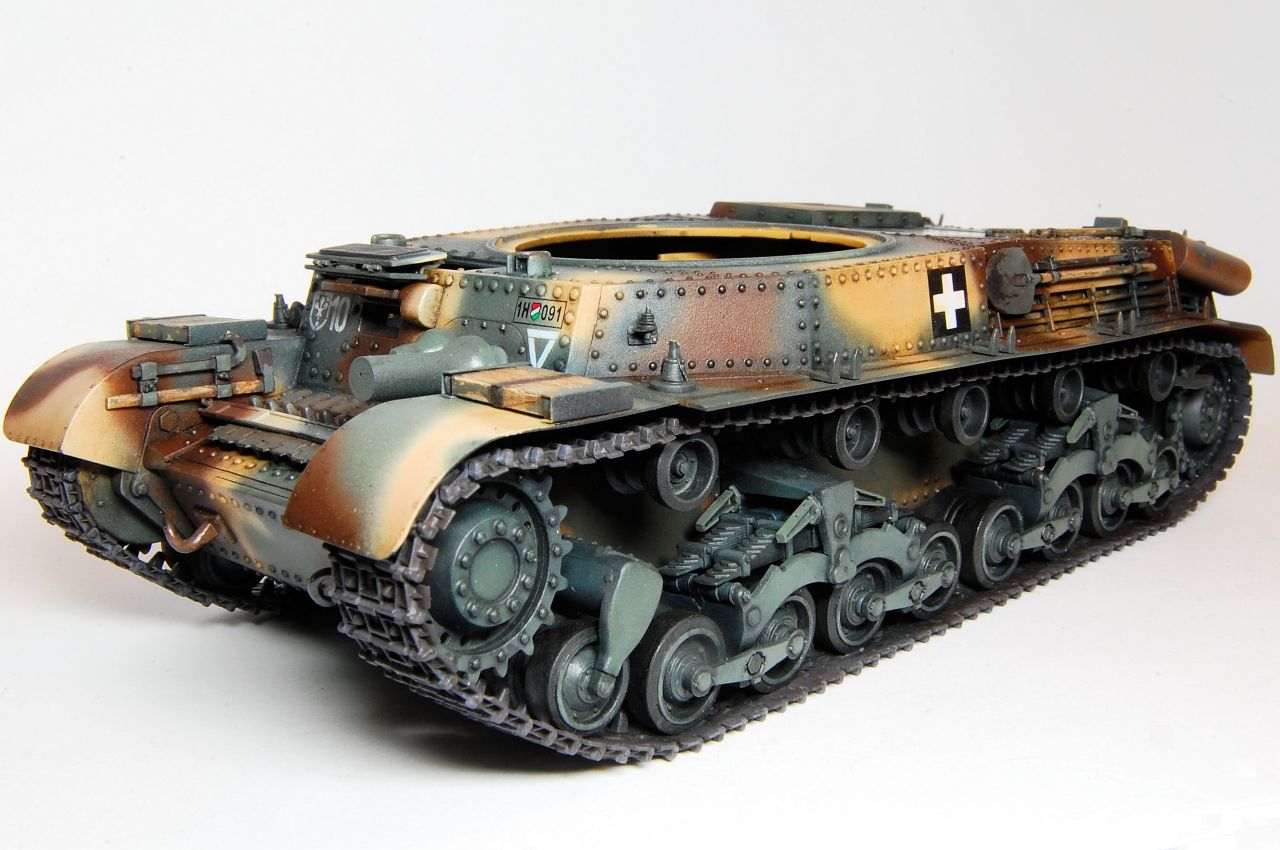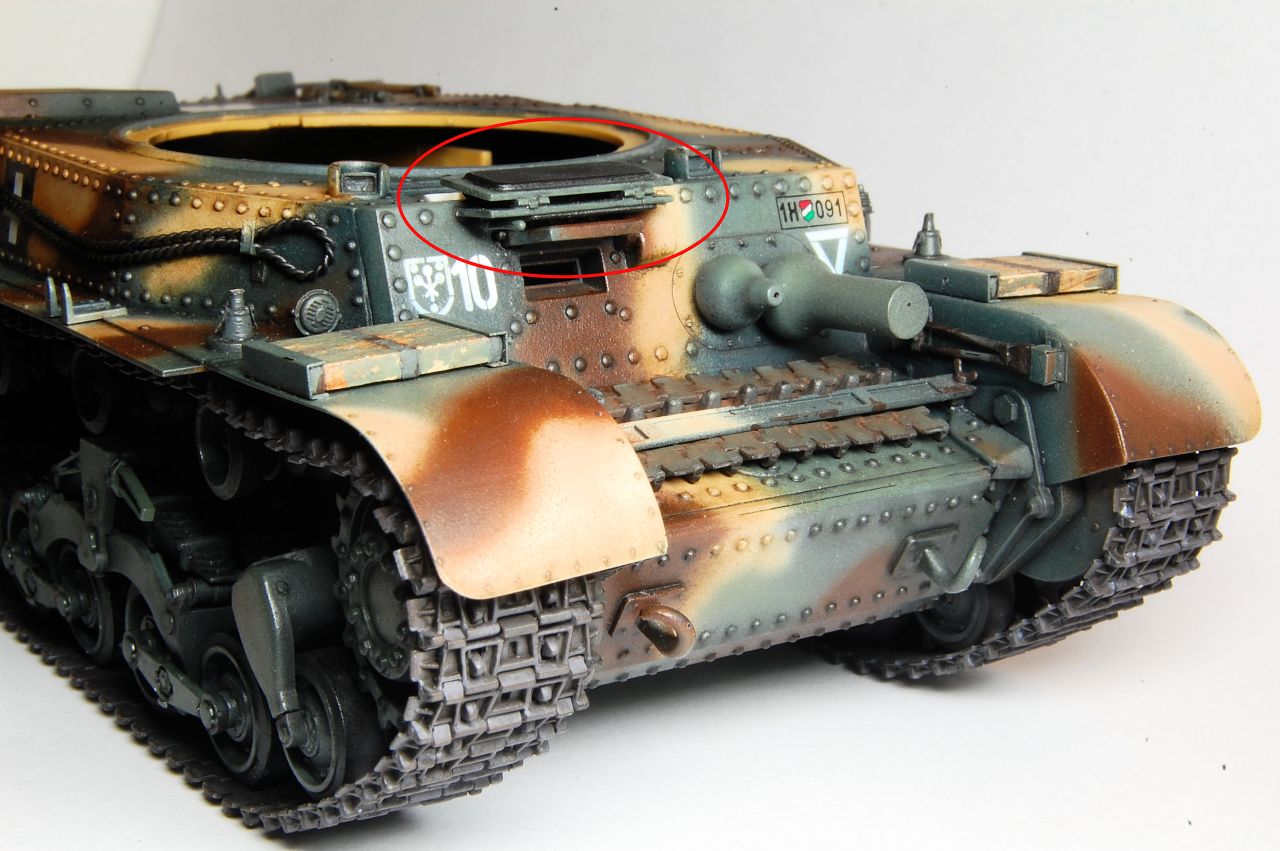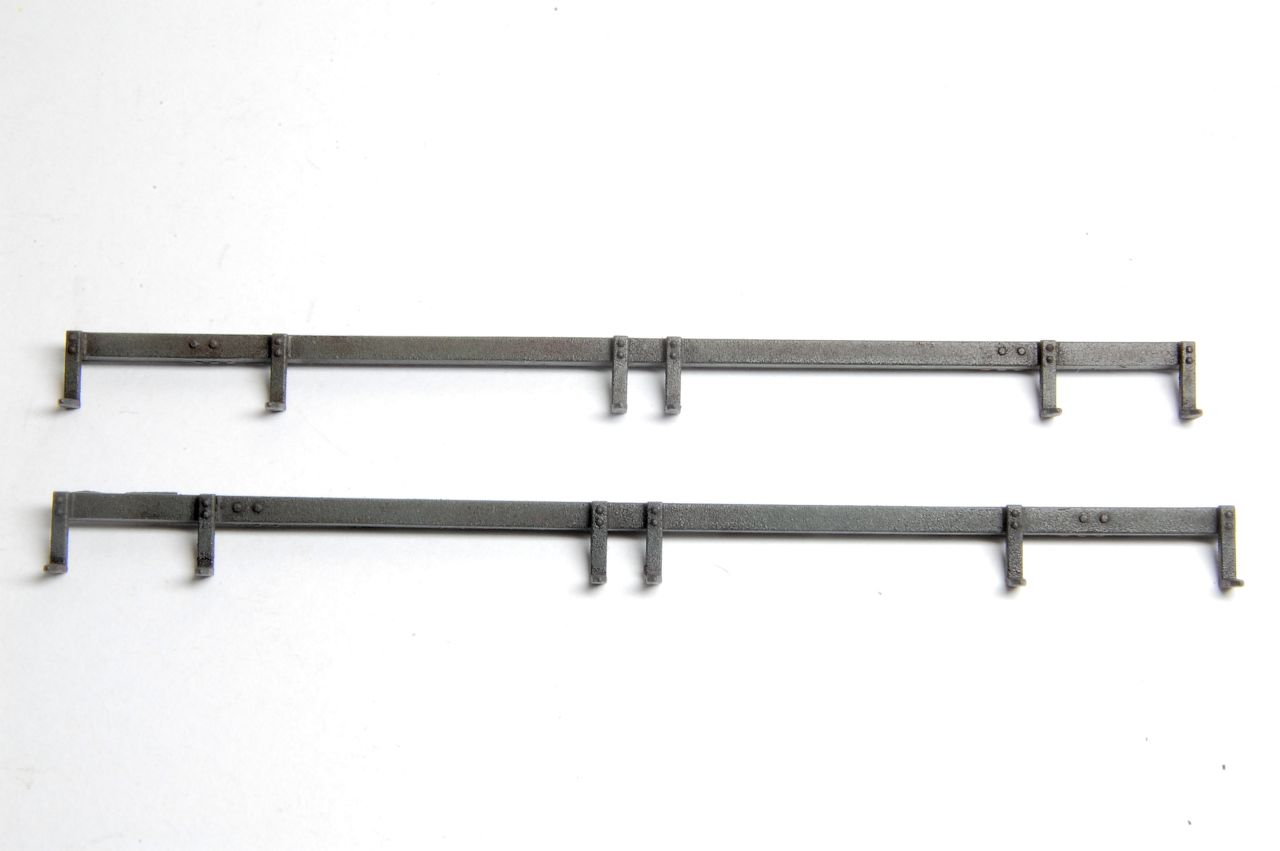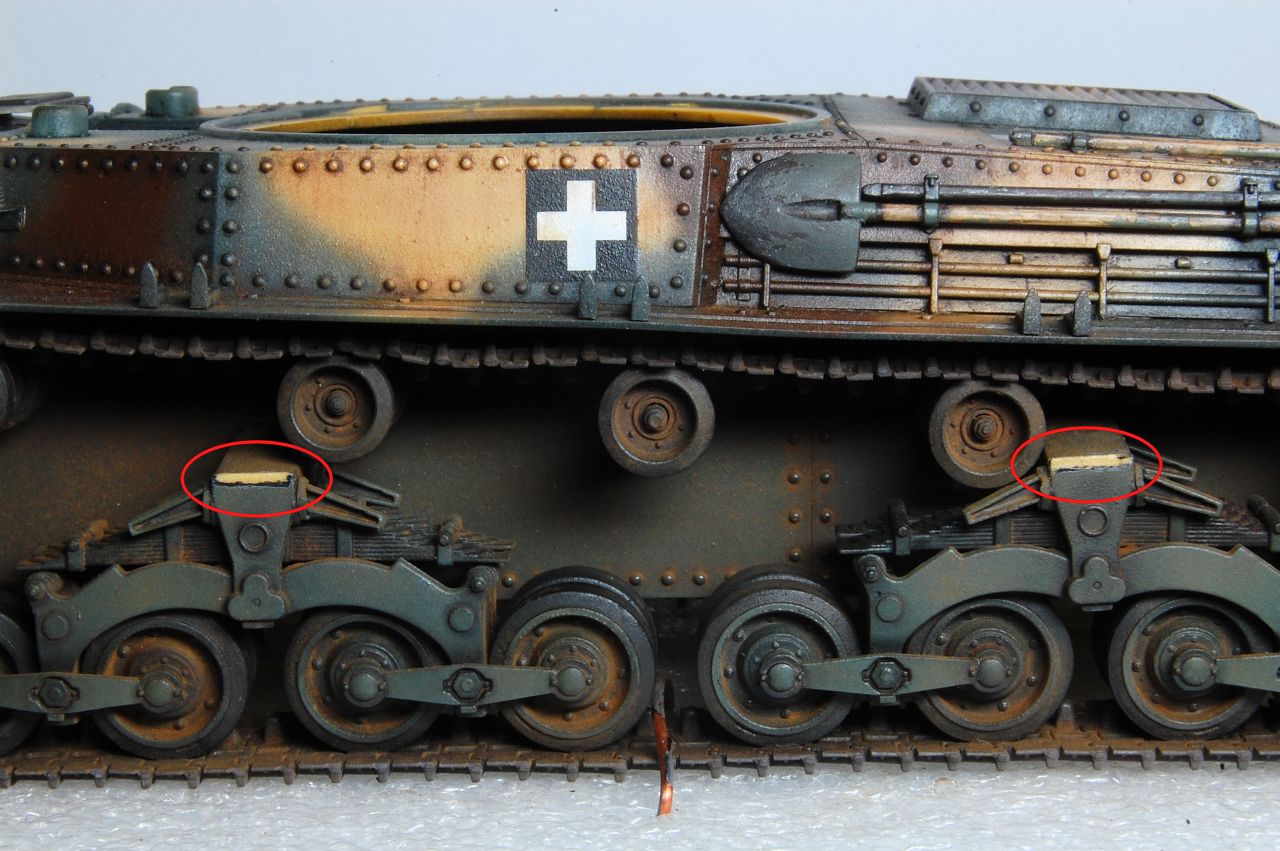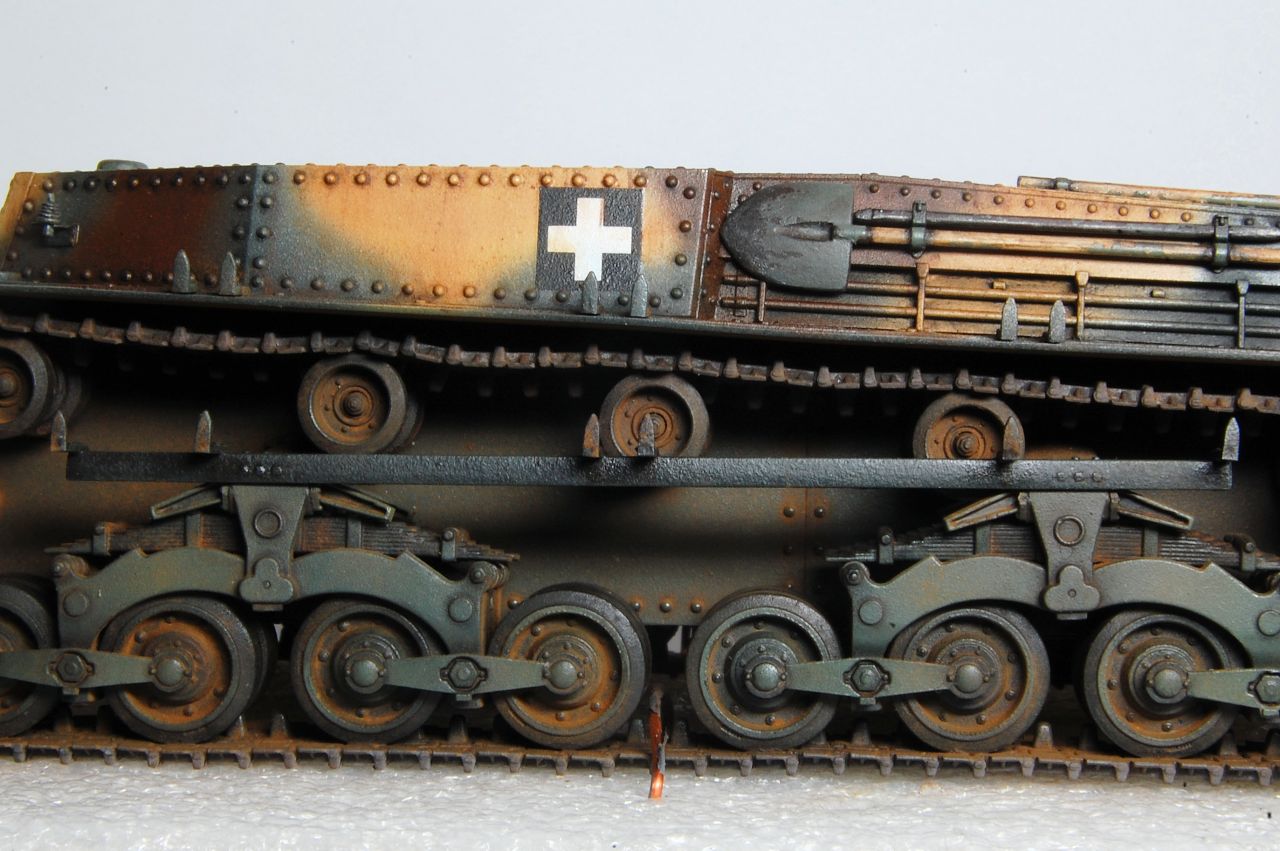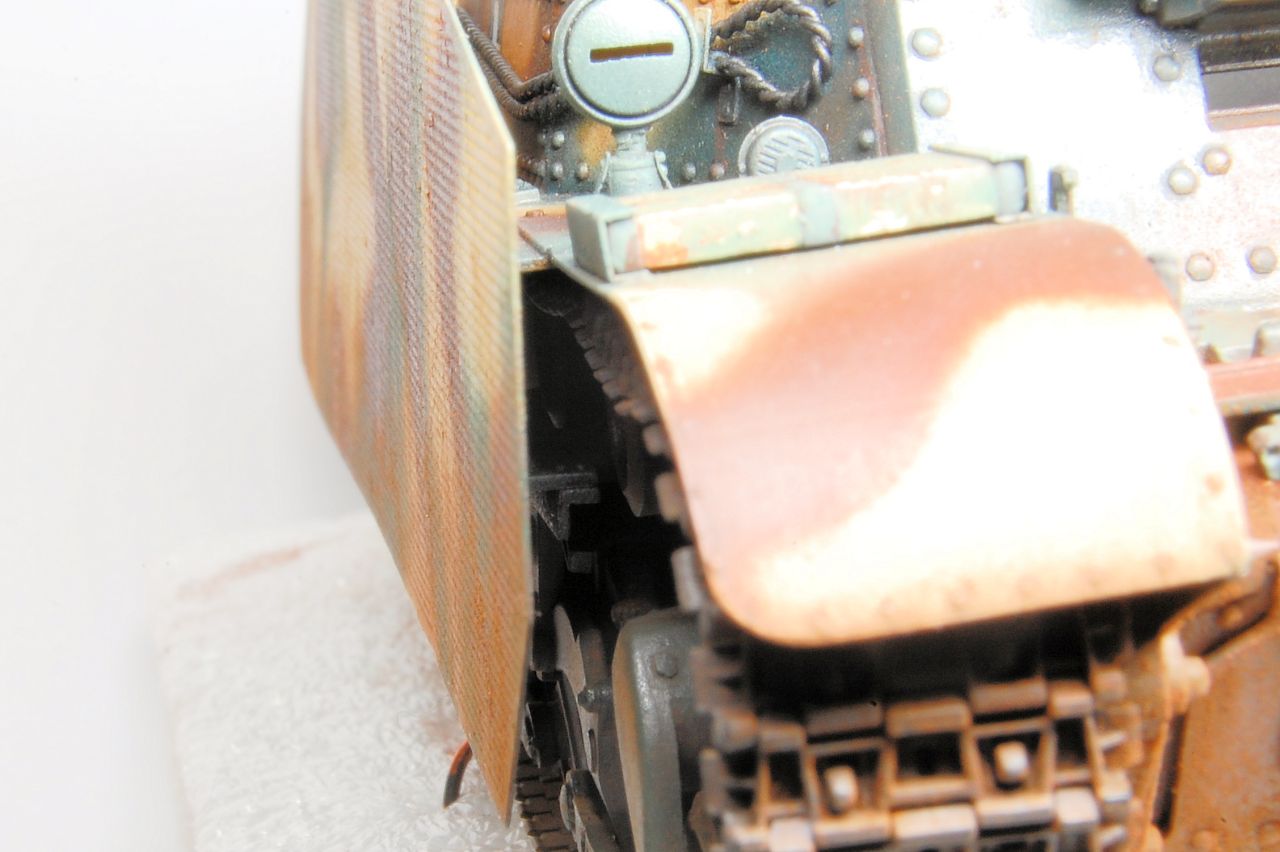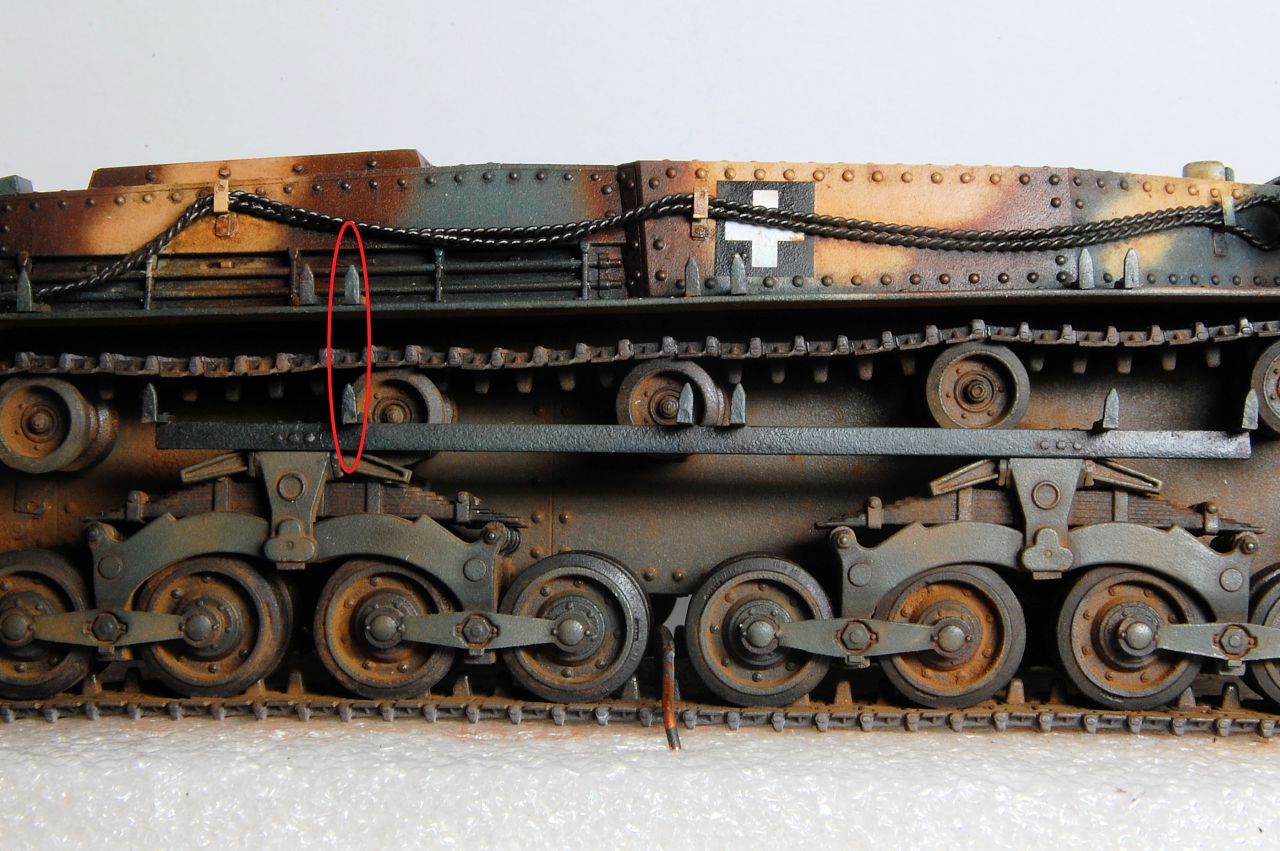After an interruption for a 1/72 build, I've got around to doing some painting on this one. A bit of a saga around trying to use the Hungarian AFV panel lighting set from Hataka which I thought I would give a go as it supposedly provides the correct colours for this build. It's one of Hataka's "red line" series of purely water based acrylics, similar to Vallejo's Model Air. I had read somewhere about them working well with Mr Hobby Levelling Thinner, so having obtained the paints and the thinner, I turned the first batch of paint into green blancmange. Levelling thinner is designed for lacquer based paints, so either someone else had become confused, or perhaps also I had, failing to notice that the red on the packet was red, and not orange. (Hataka's ranges are Blue, Red and Orange... why not Green... or Purple...??)
After removing the blancmange from, and thoroughly drying, the airbrush, I mixed the Green Base paint with increasing amounts of Liquitex Slo-Dri retarder, but no thinner,, until it flowed consistently at about 20psi without tip drying. The result was satisfactory, a very matt, very slightly grainy, shade of bluish green:



The Green Flash paint was mixed the same way, and some colour variation was added, pretty subtle, the Green Flash being more green, less blue-grey:
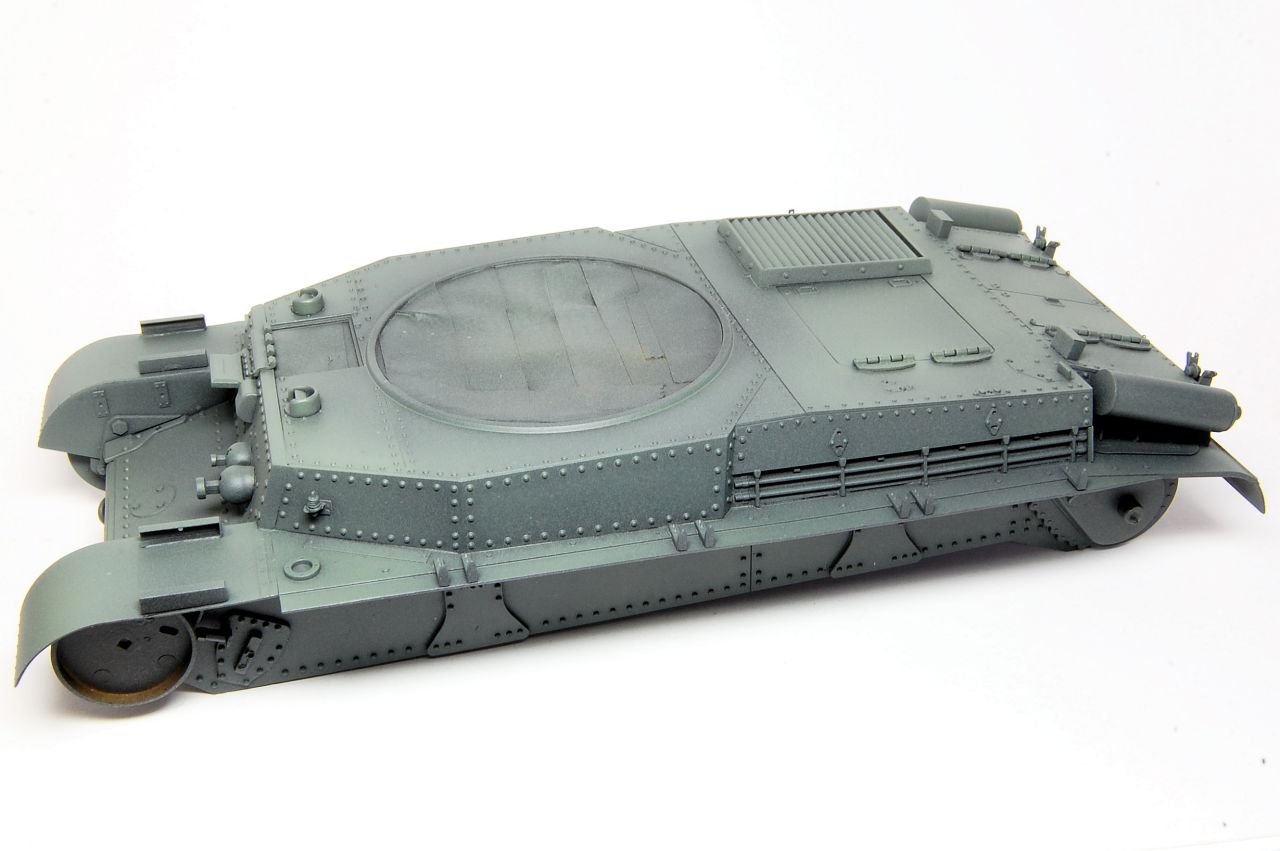
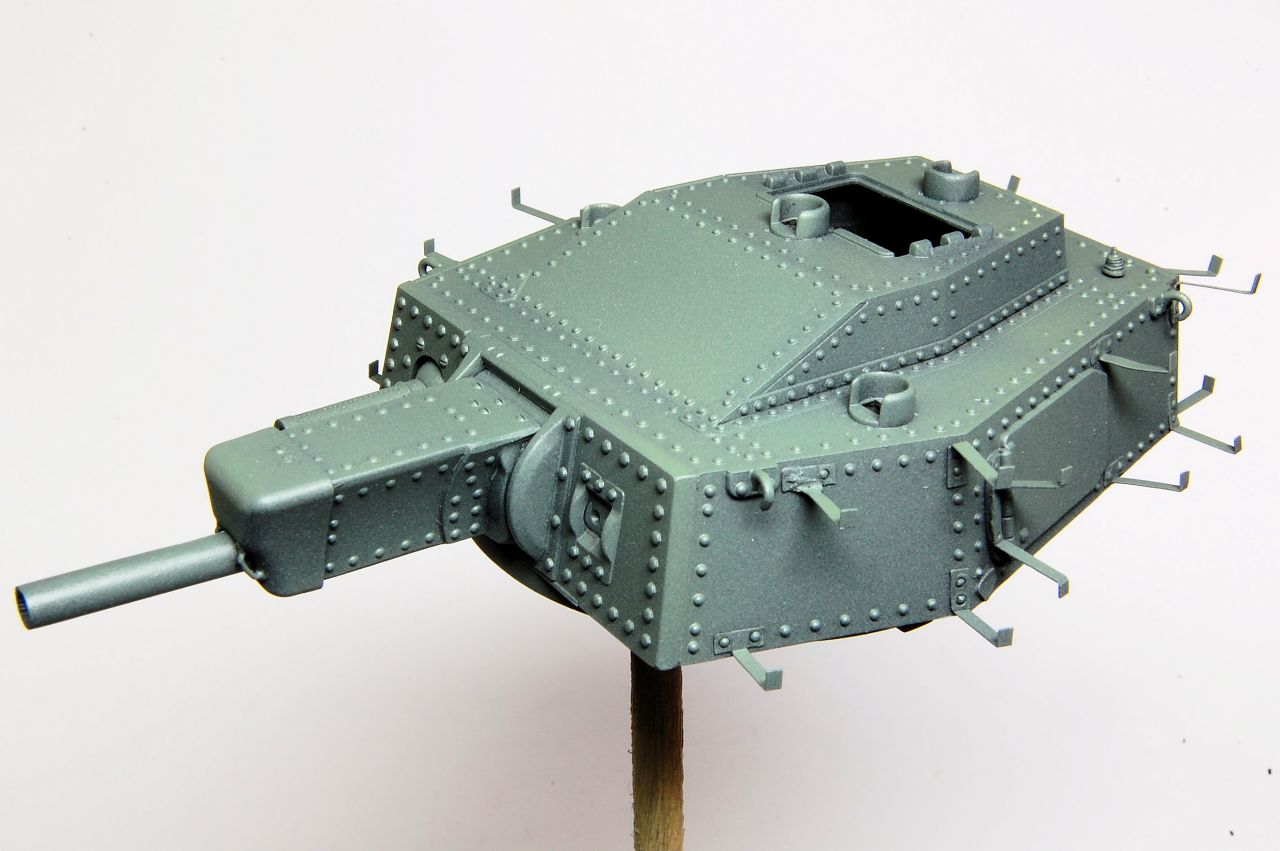
Midweek I had a day off and sketched out a plan of the camouflage pattern, and thought I'd get comfortable with spraying the Sand Base paint. I started off mixing it the same way as with the green, adding progressively more retarder, and test spraying from about an inch away with around 12psi to avoid spidering. I could only ever paint like that for about 20 seconds at a time before the tip of the needle had a build up of dried paint that had to be cleaned off. Opening up the trigger would allow paint to flow, and I suppose that's how I painted the green base coat, with broad strokes, but it was just too inconstant to allow close up thin lines to be sprayed. I tried mixing with all the potential substances that I have, but all produced exactly the same result.
So not wanting to use Bronco's suggested Tamiya dark yellow, which is nothing like the Hataka sand colours, which are much more orangey sandy with no greenish tone, I toyed with ordering some other paints, but having spent several hours messing around with the Hataka sand, I was getting impatient, so I took an old 5% full bottle of Tamiya Buff, topped it up to about 10% full with Wooden Deck Tan (more orangey) and then up to about 15% full with Mr Hobby Color Sand (the really stinky lacquer one) and finally thinned it with Mr Levelling Thinner. These don't mix immediately but do if given a good shake.
So this mix took me to somewhere not far from the Hataka Sand colour, and also flowed acceptably under this low pressure. It has to be said, that even this paint mix tip dried, but after more like two minutes of painting, rather than 20 seconds, so it was usable. I could tell when it was about to start as it started whistling and small threads of dried paint were expelled. This could have been due to contamination from the water based acrylic; ideally the airbrush should be completely dry when changing from one type of paint to the other (or use a different a/b).
Anyway, WWII Hungarian three colour camouflage: the instructions show a hard edge and I've previously used blue tack to mask a 1/72 Turan. Photos seem to show however that the colours were hand sprayed, not masked, but the edge is only a little soft. I thought about thick blue tack masking so that the paint doesn't quite spray to the edge, giving a semi soft line, but a) couldn't be bothered masking it, especially with all those armour stays on the turret, b) blue tack tends to influence the pattern and the shapes often look a bit sausage like, c) probably would end up with some hard and some soft lines. Decided therefore to free hand it, hence the saga above.
The finish should be harder edged than this, but it's a start and seems OK. I'll add some variation to this colour next, then do the red-brown colour.
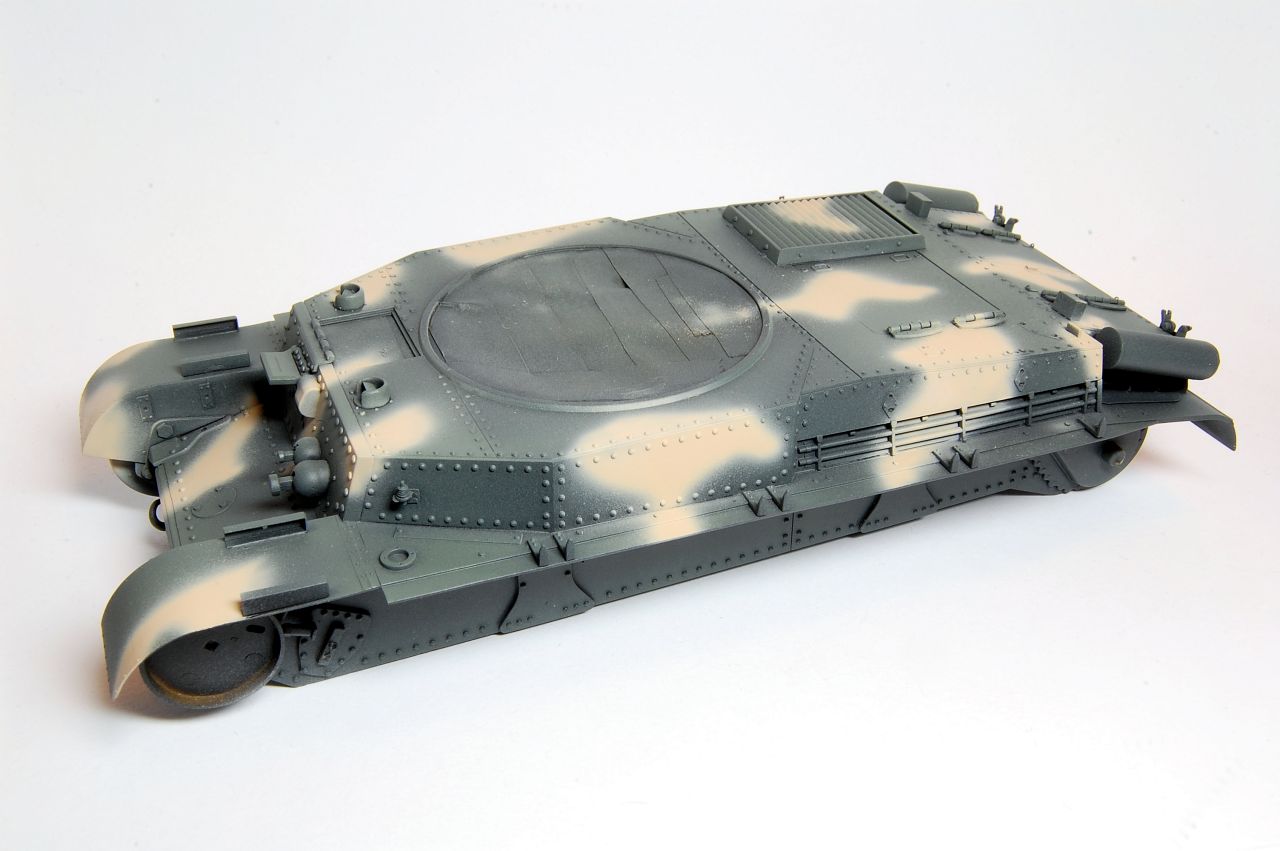
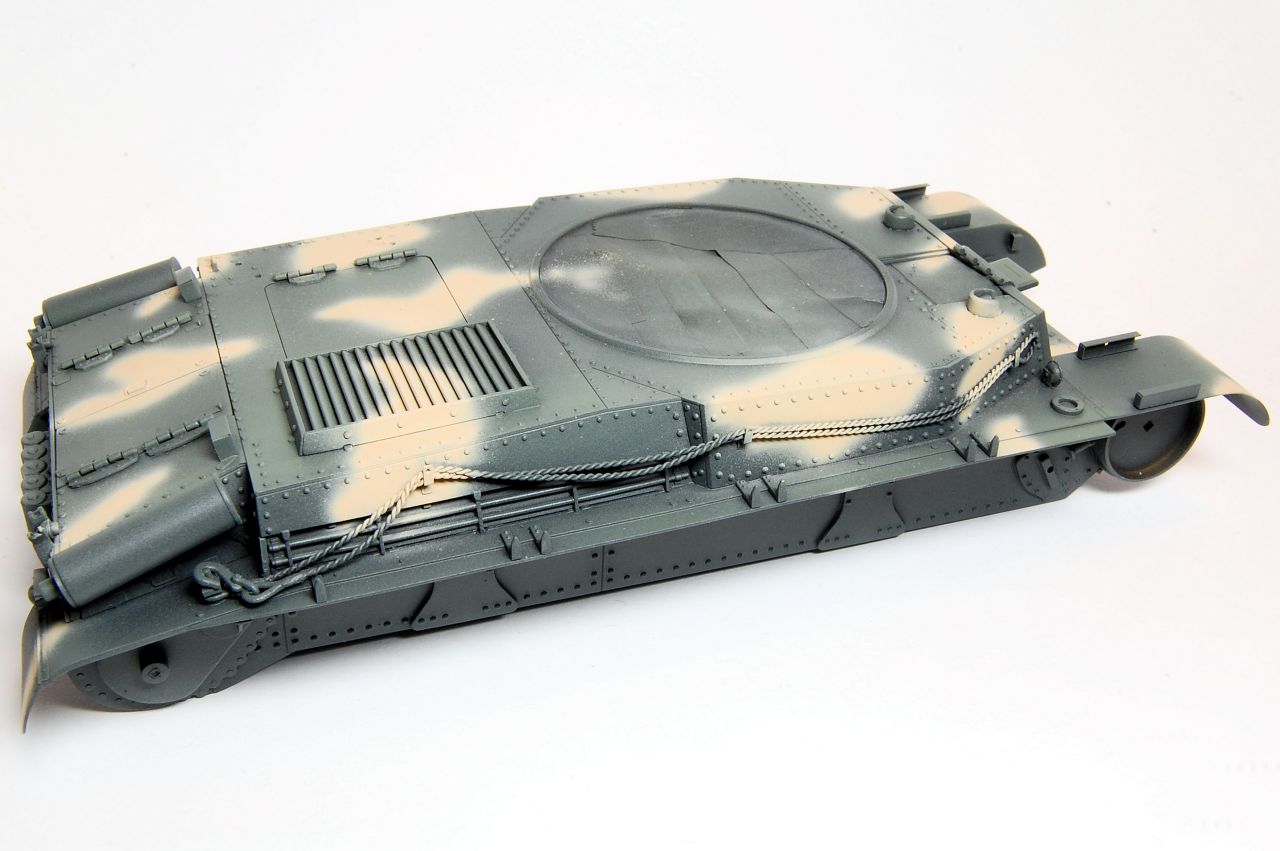




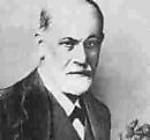


















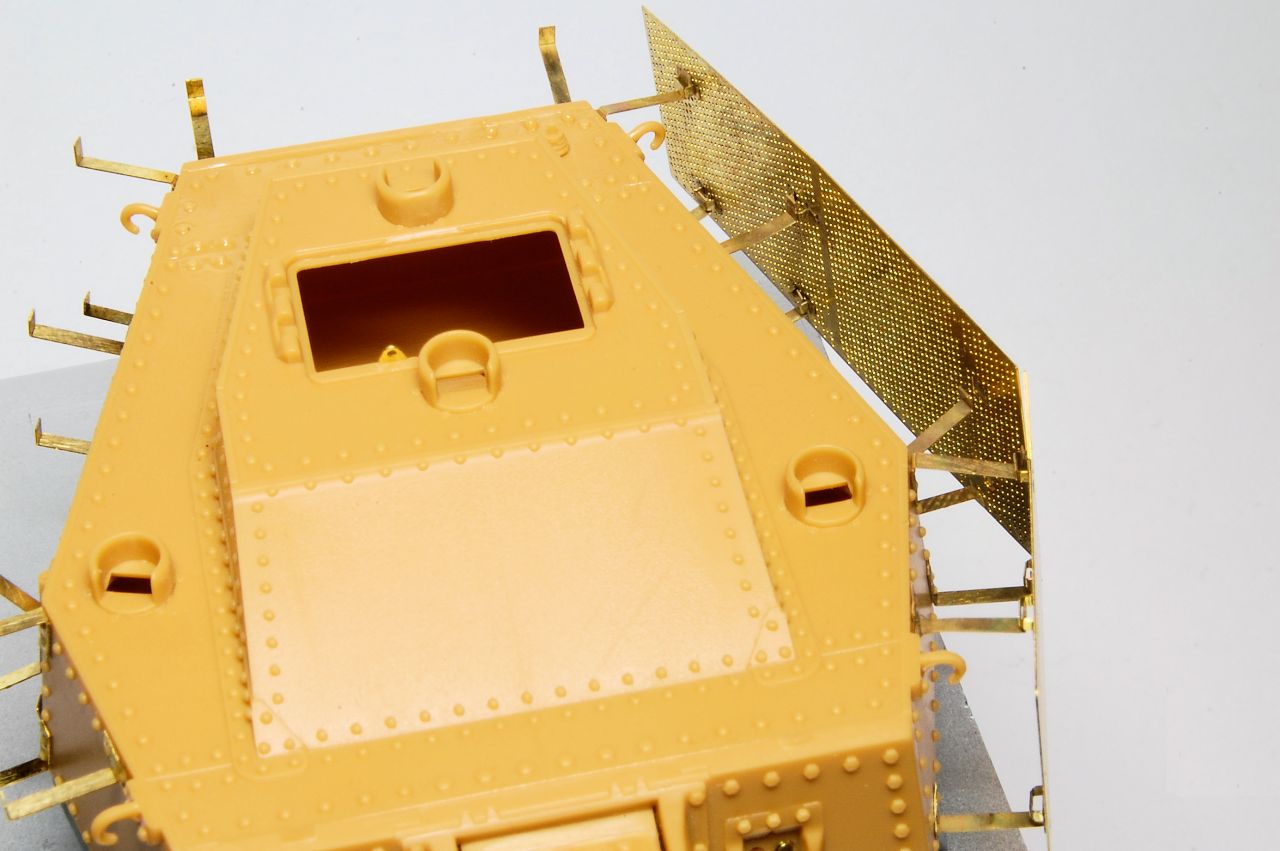

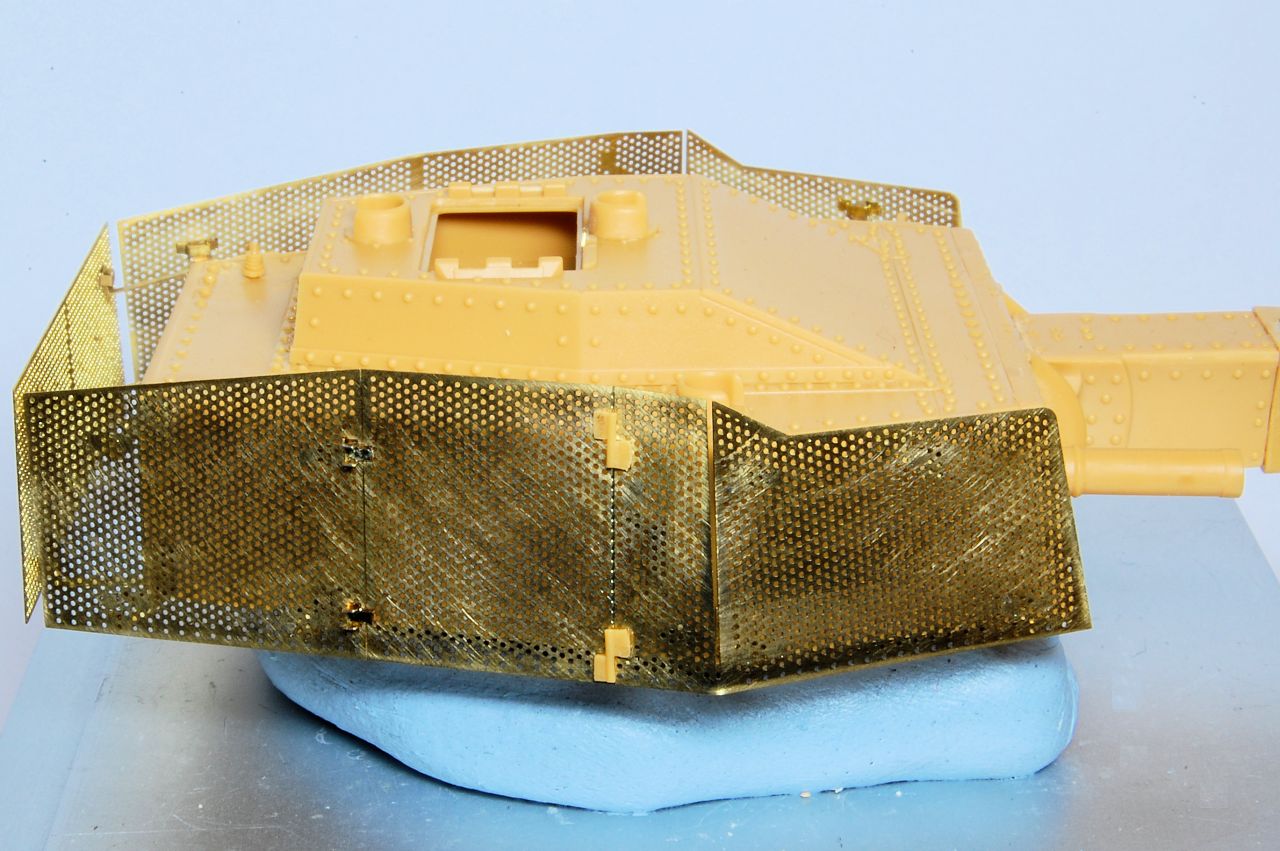
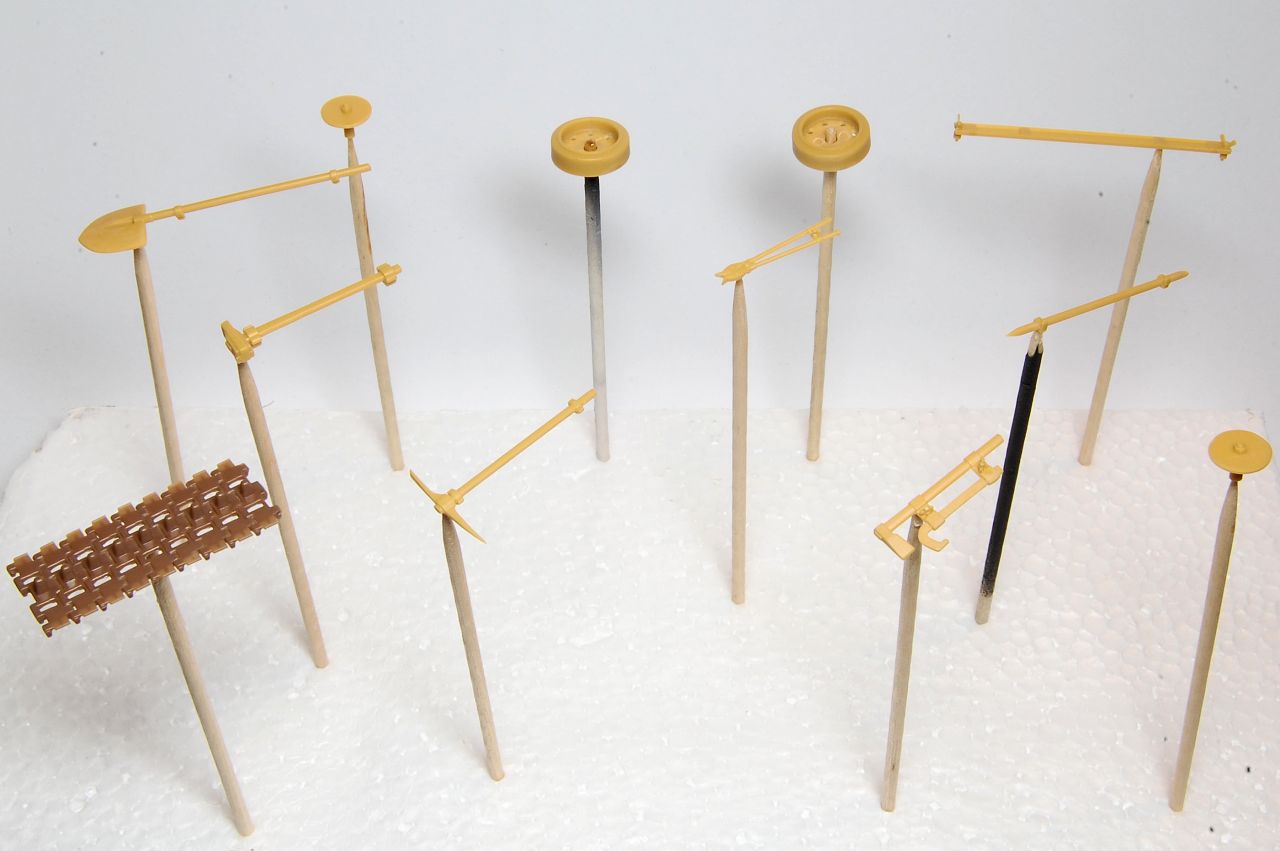
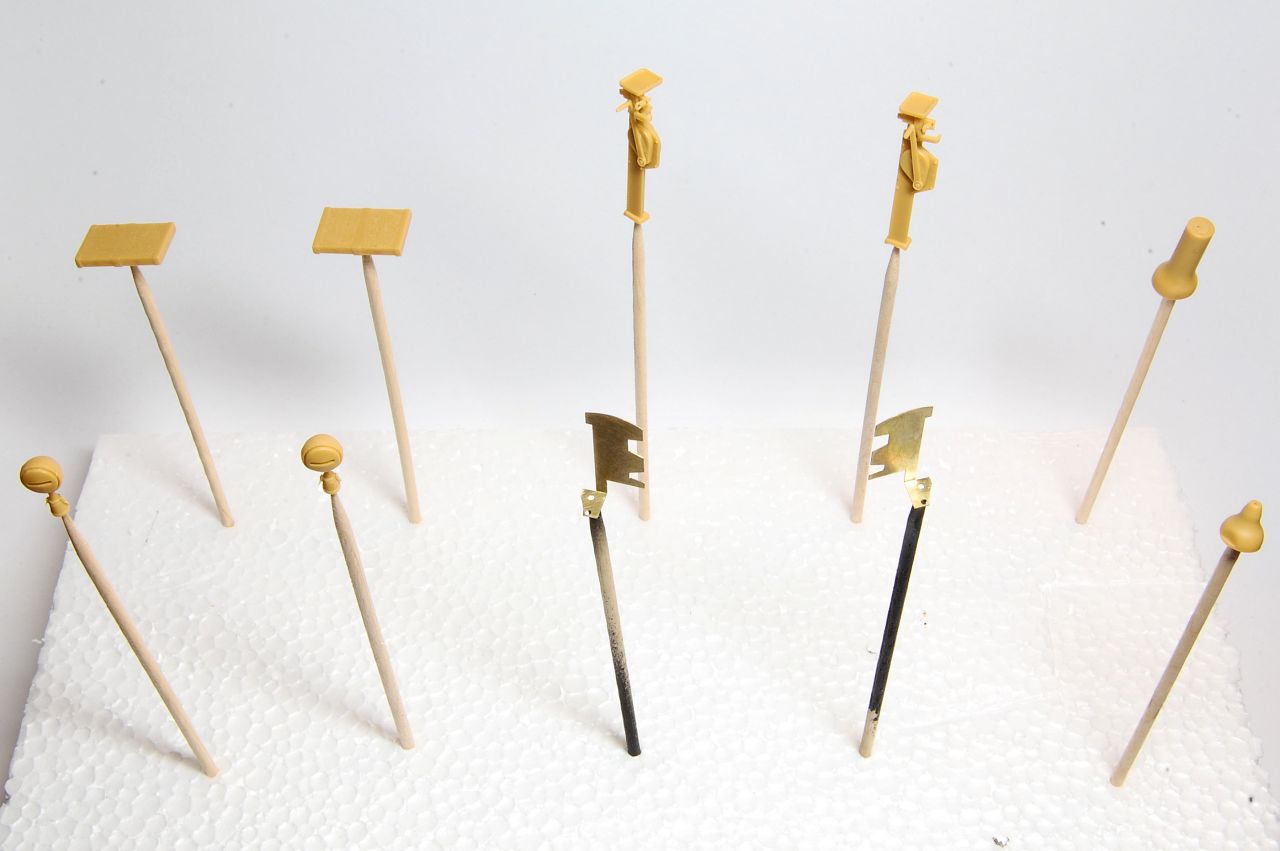





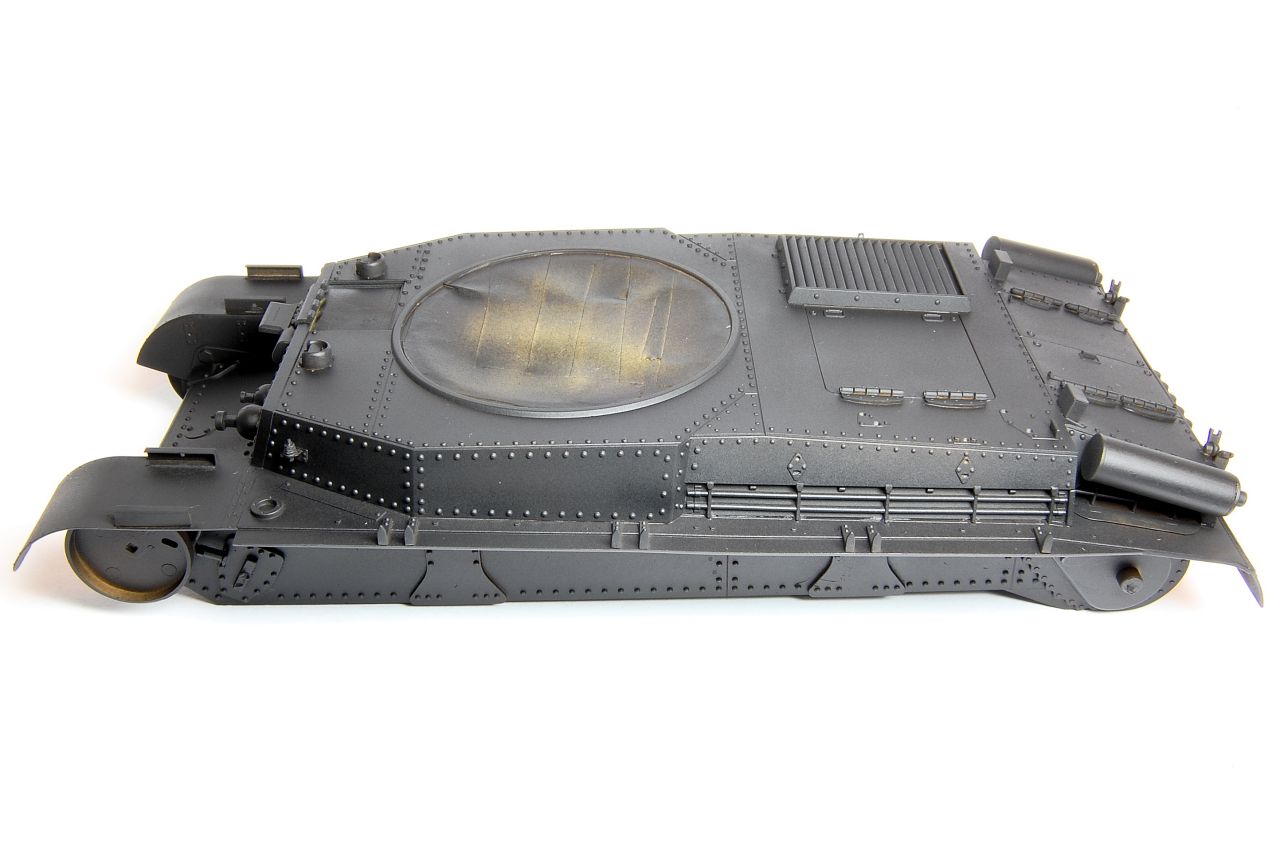
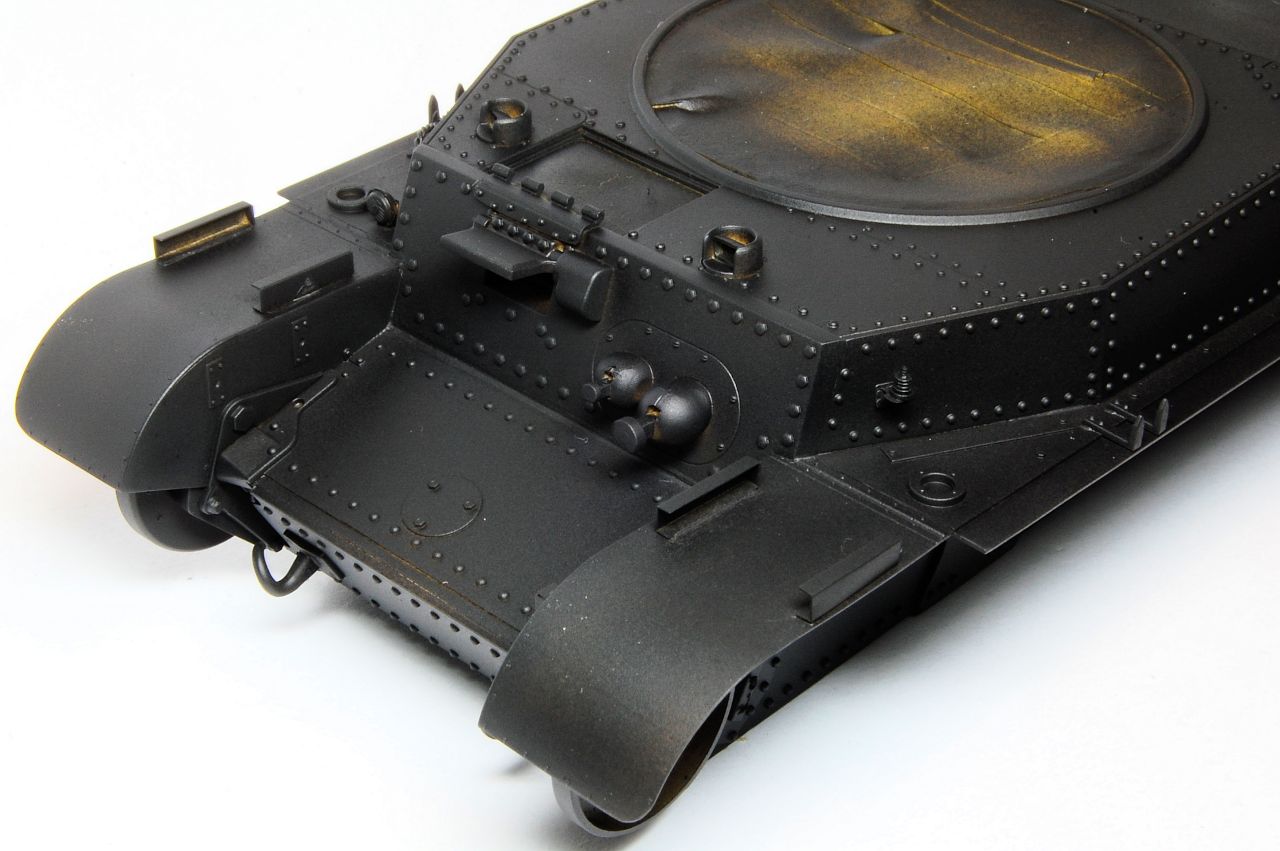


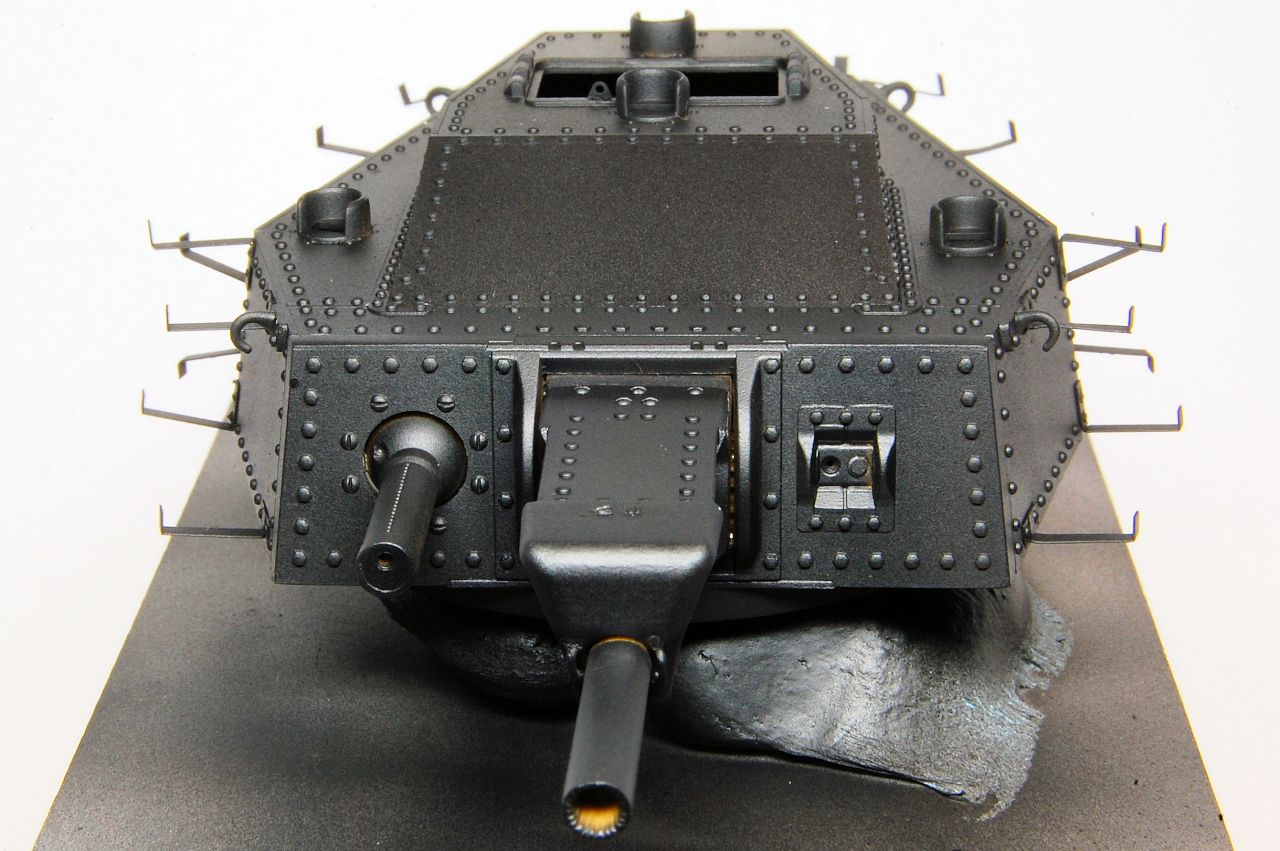
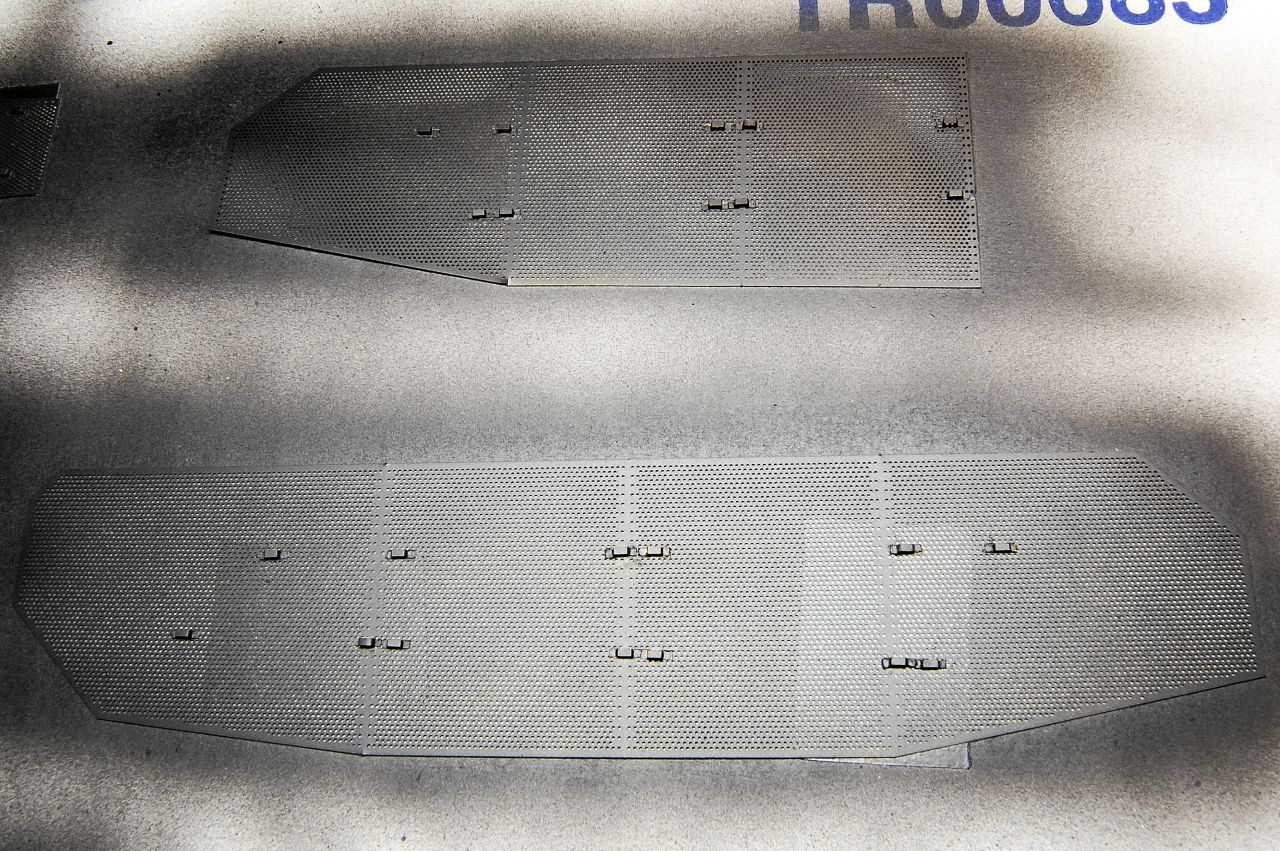
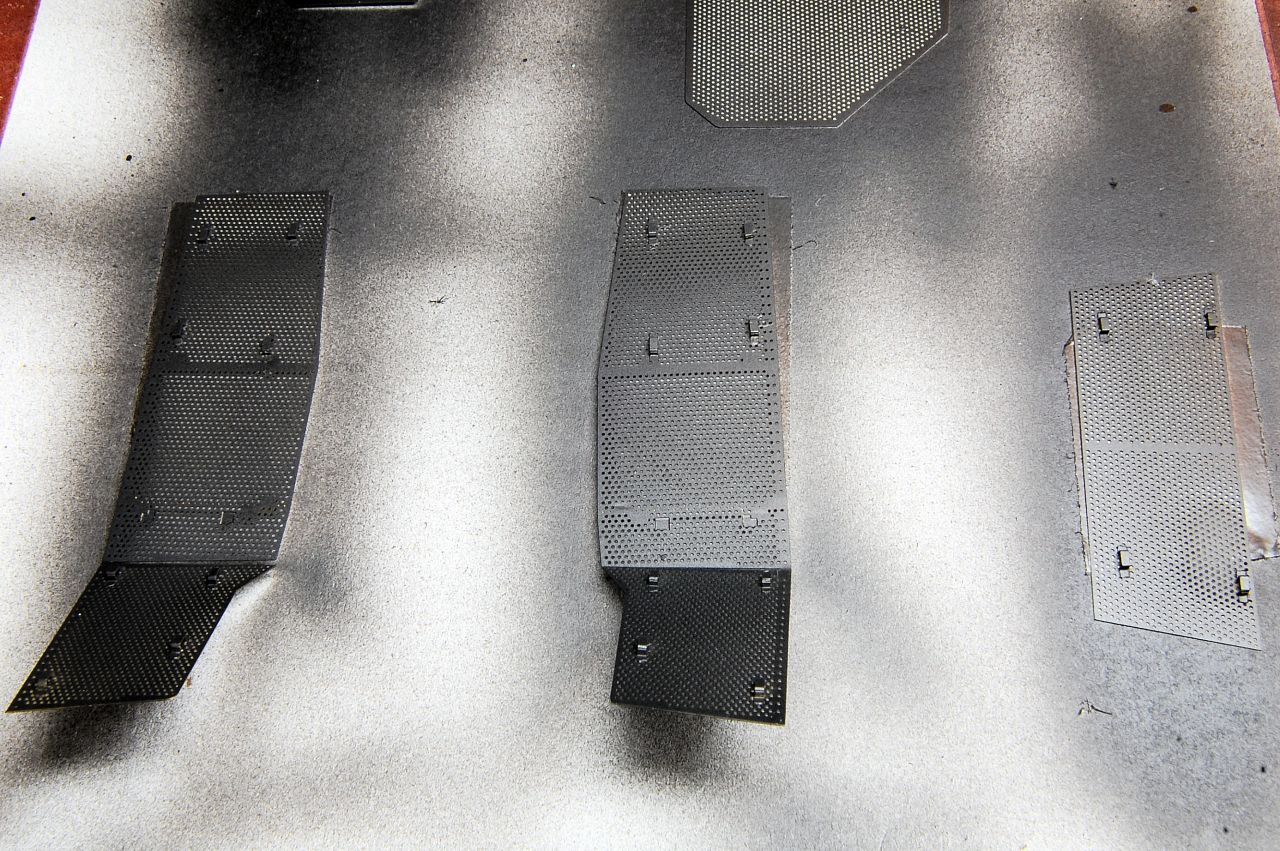
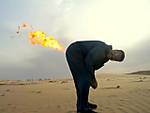





















 )
)

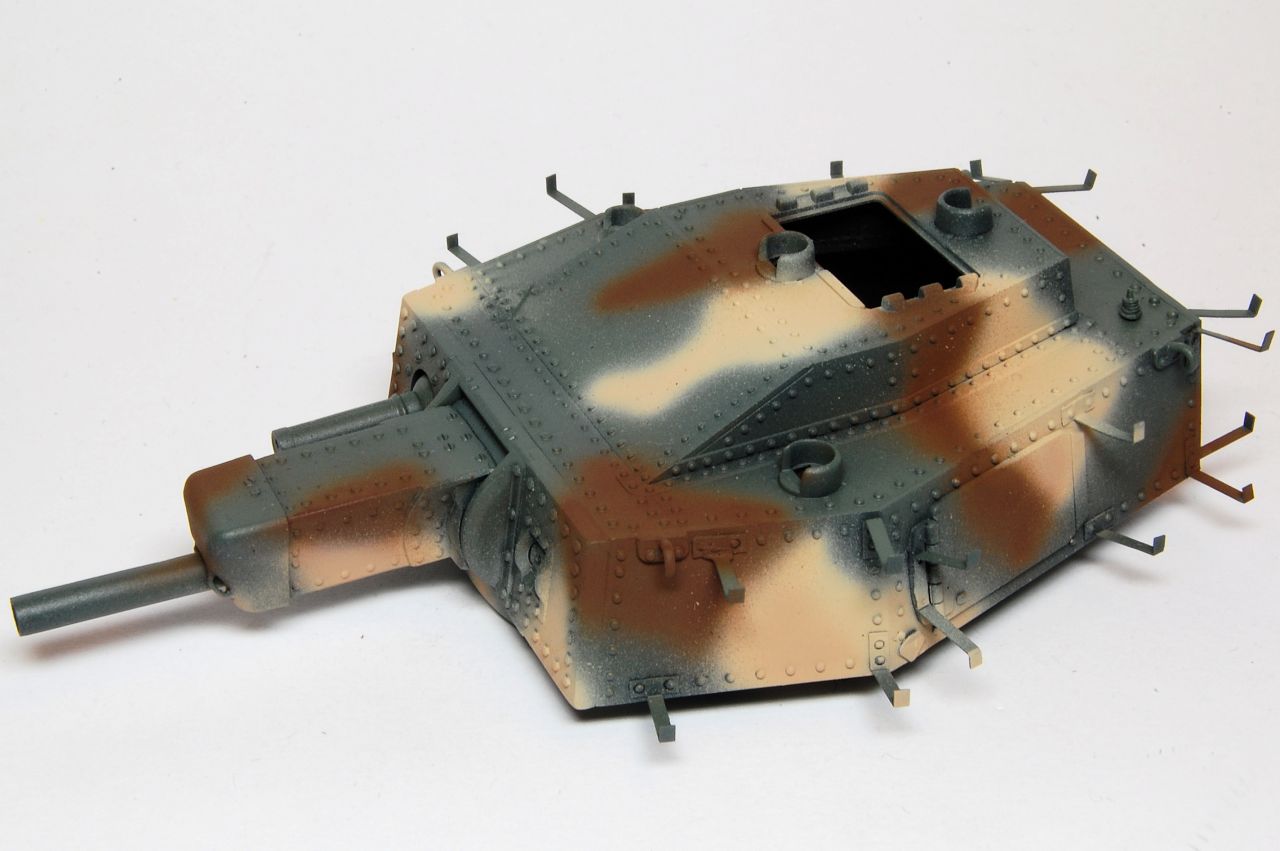





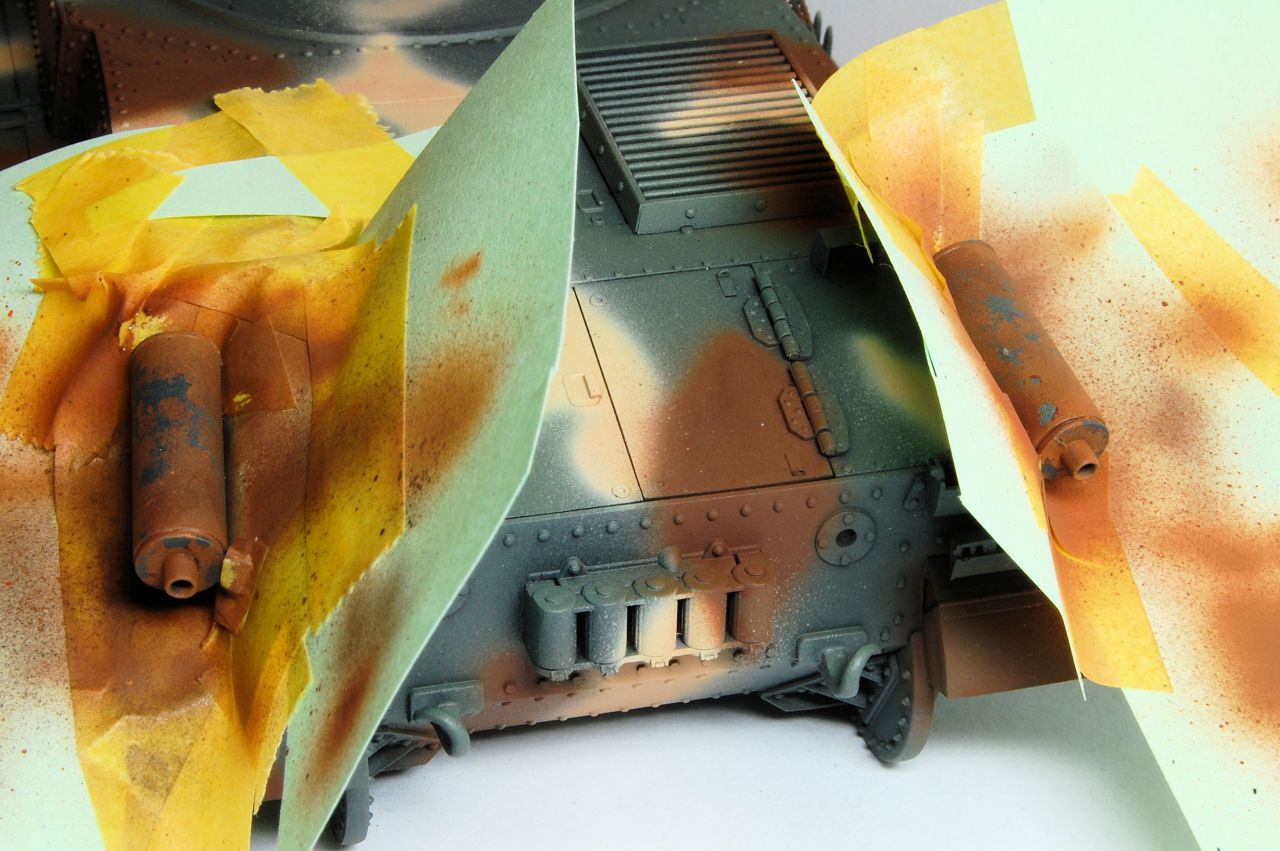
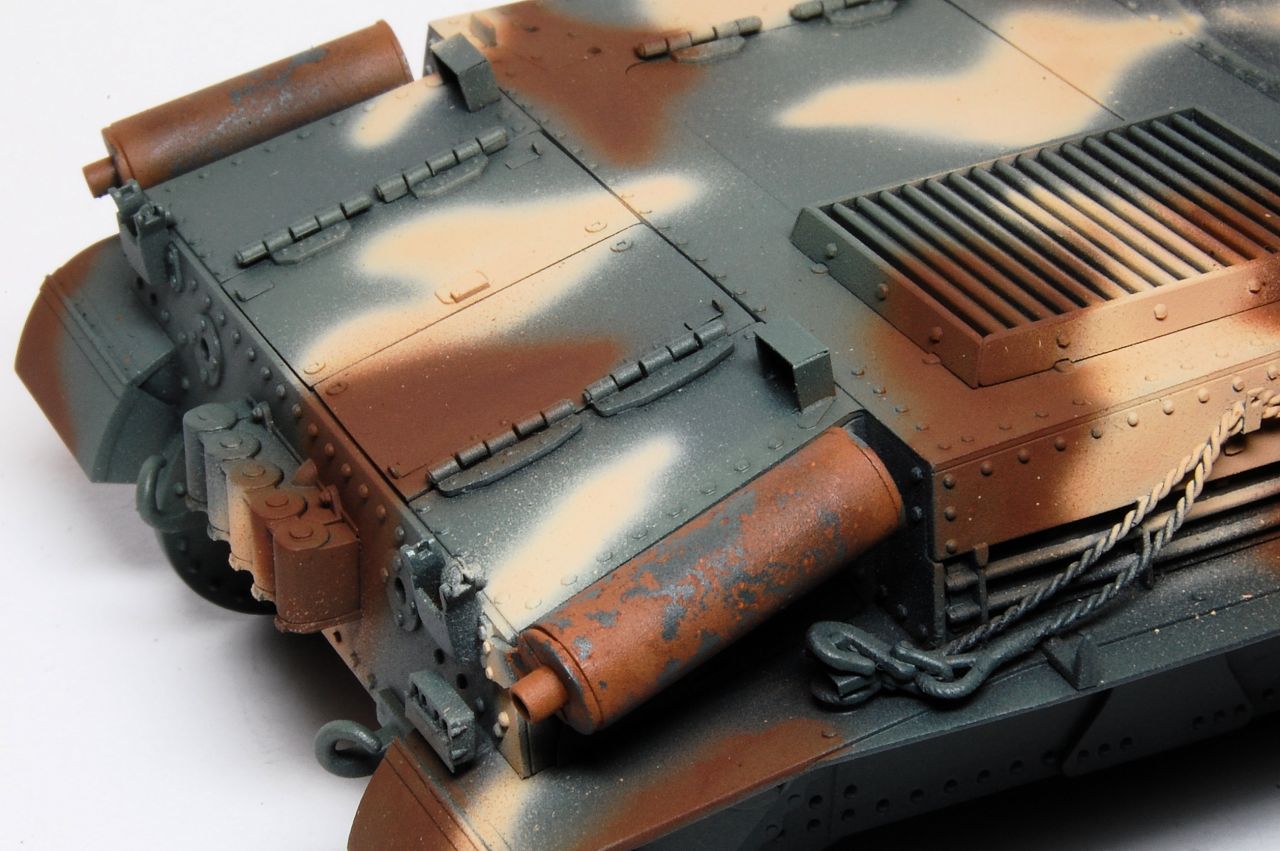
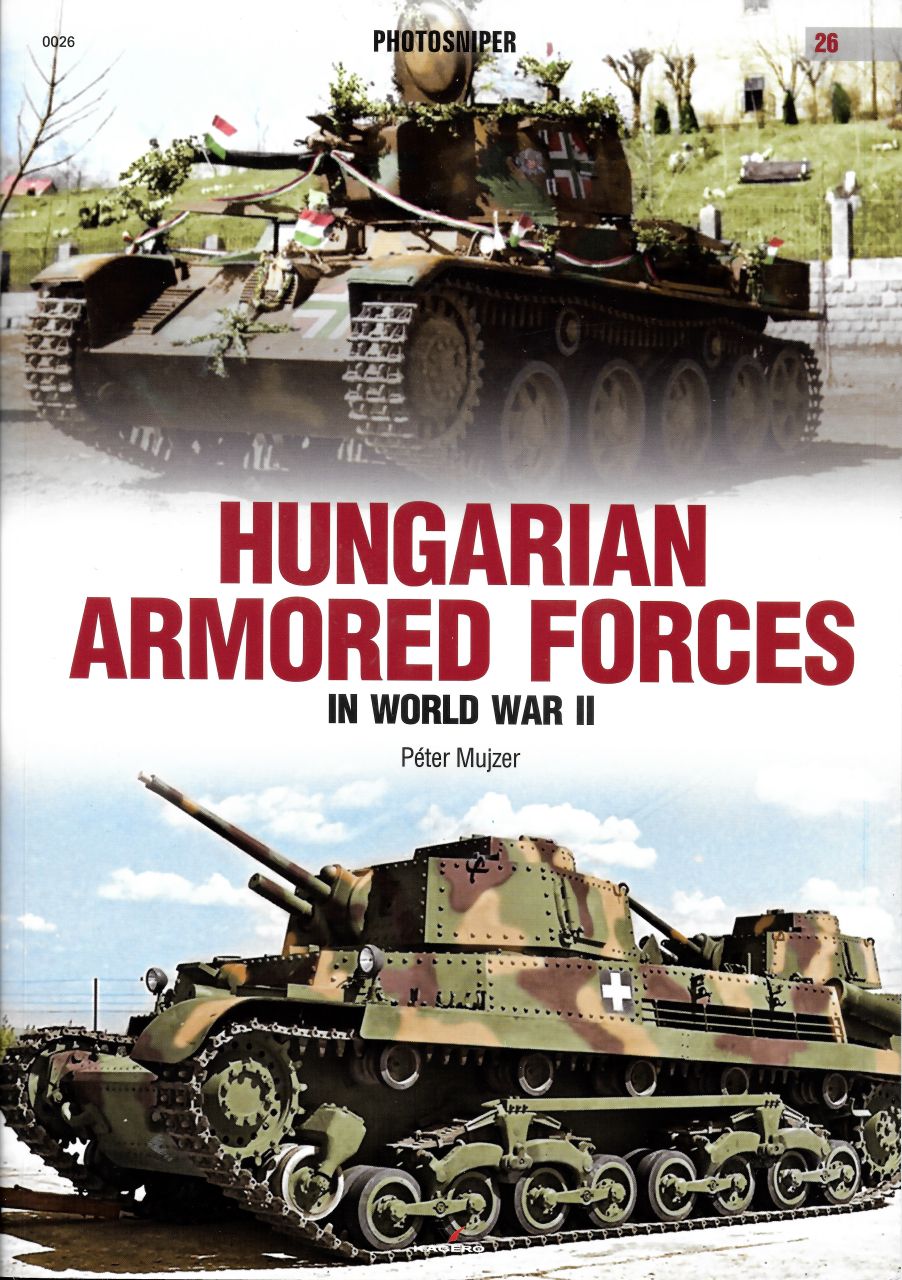







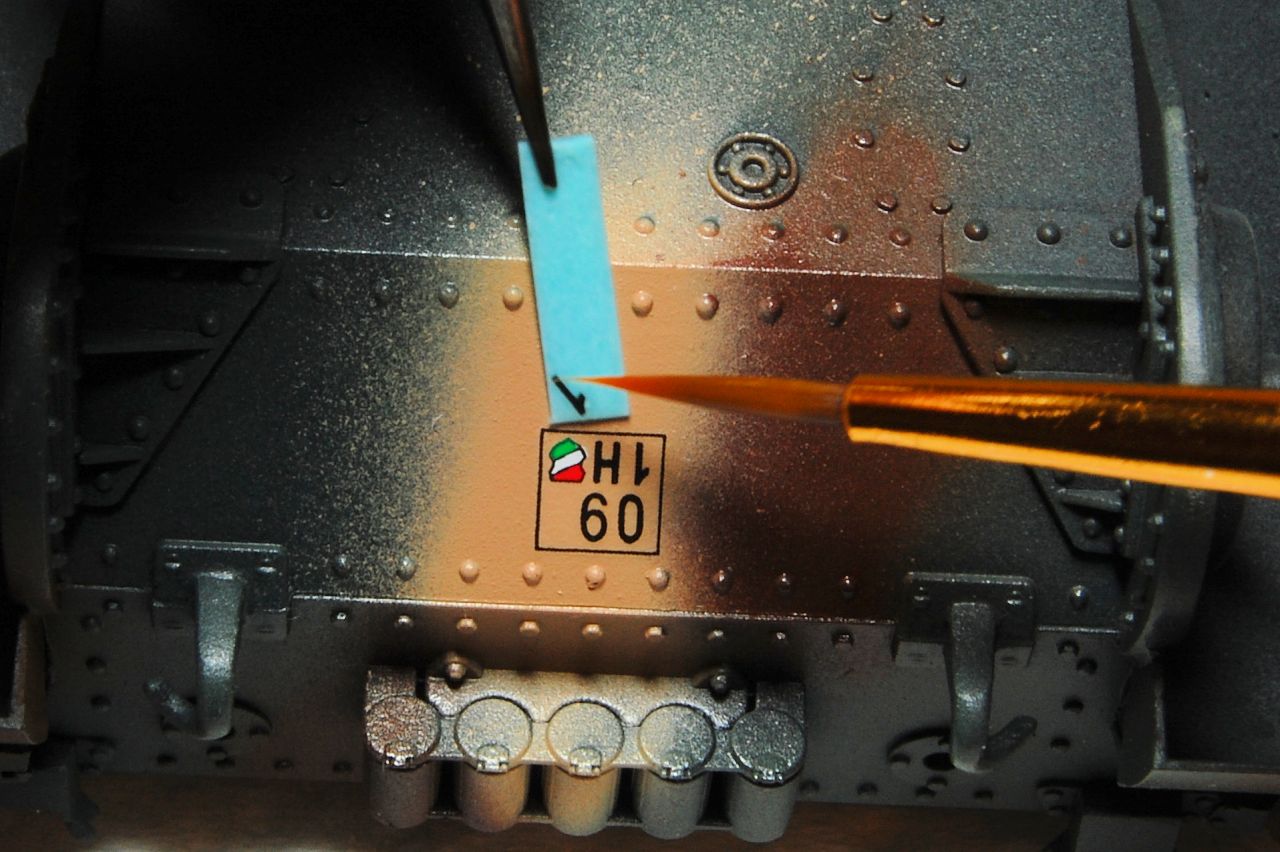
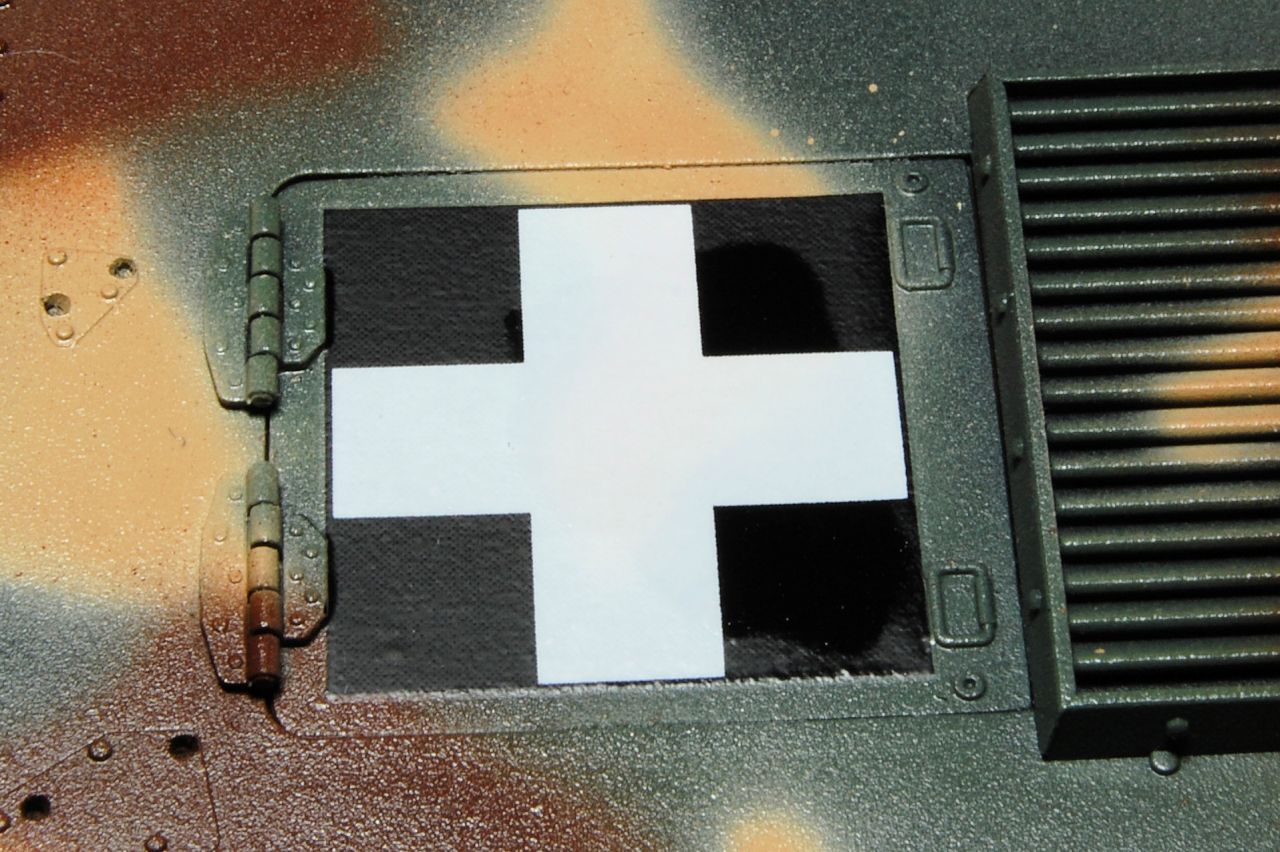
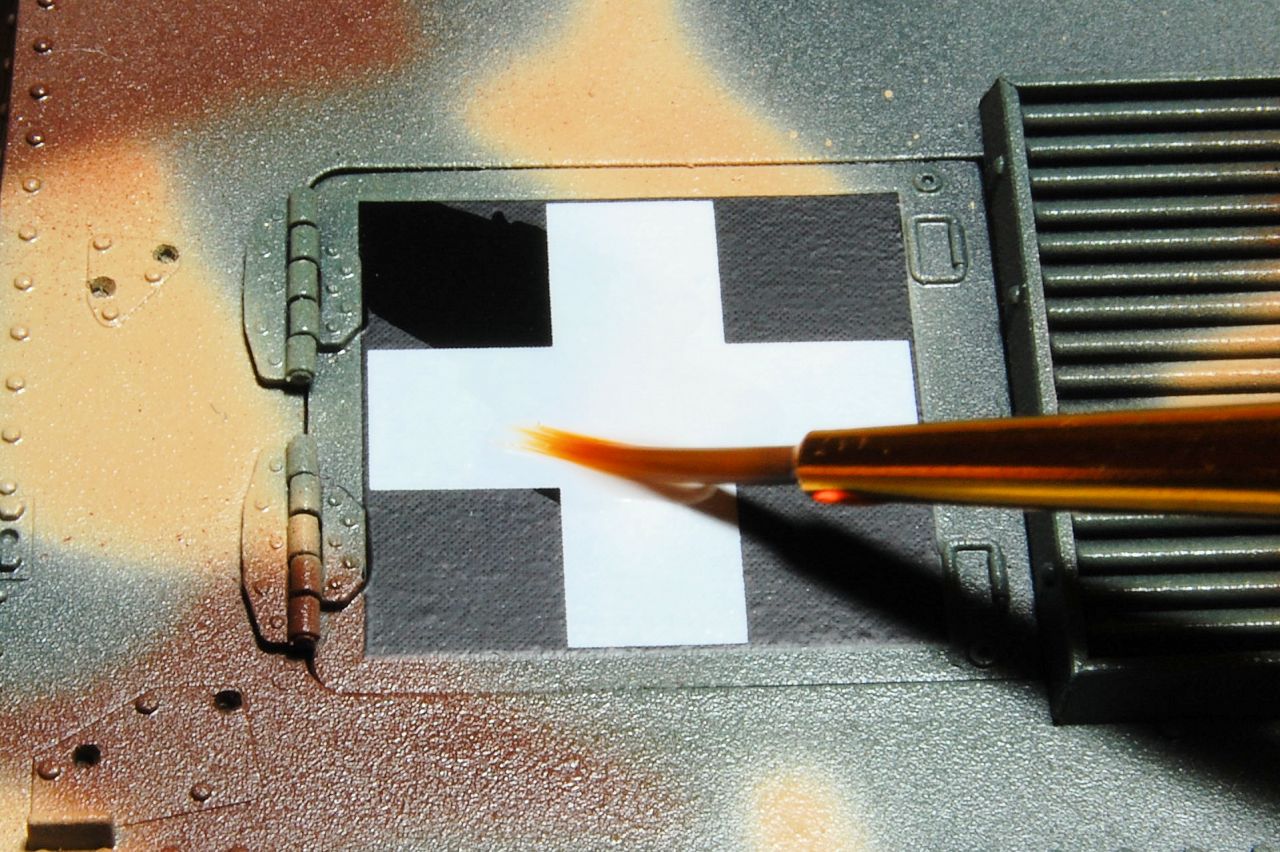
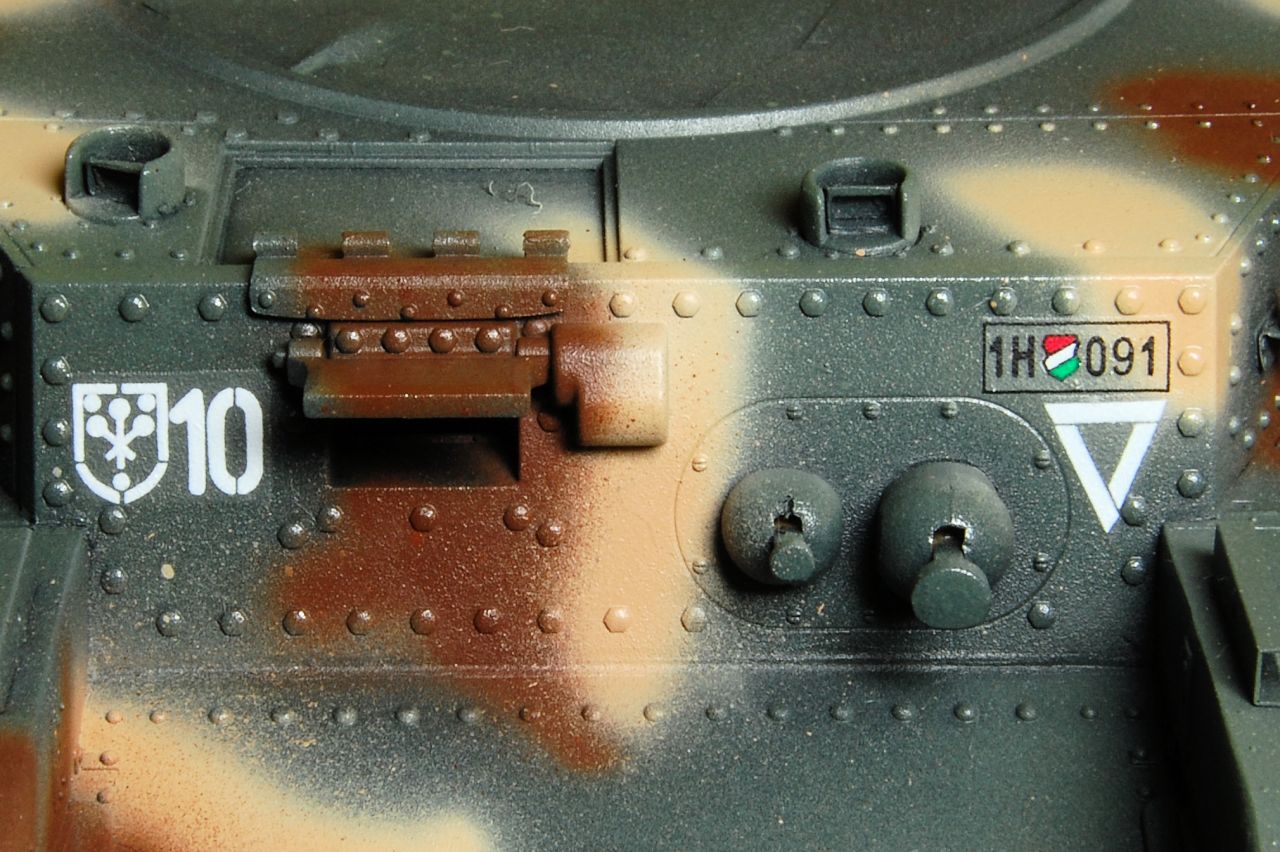
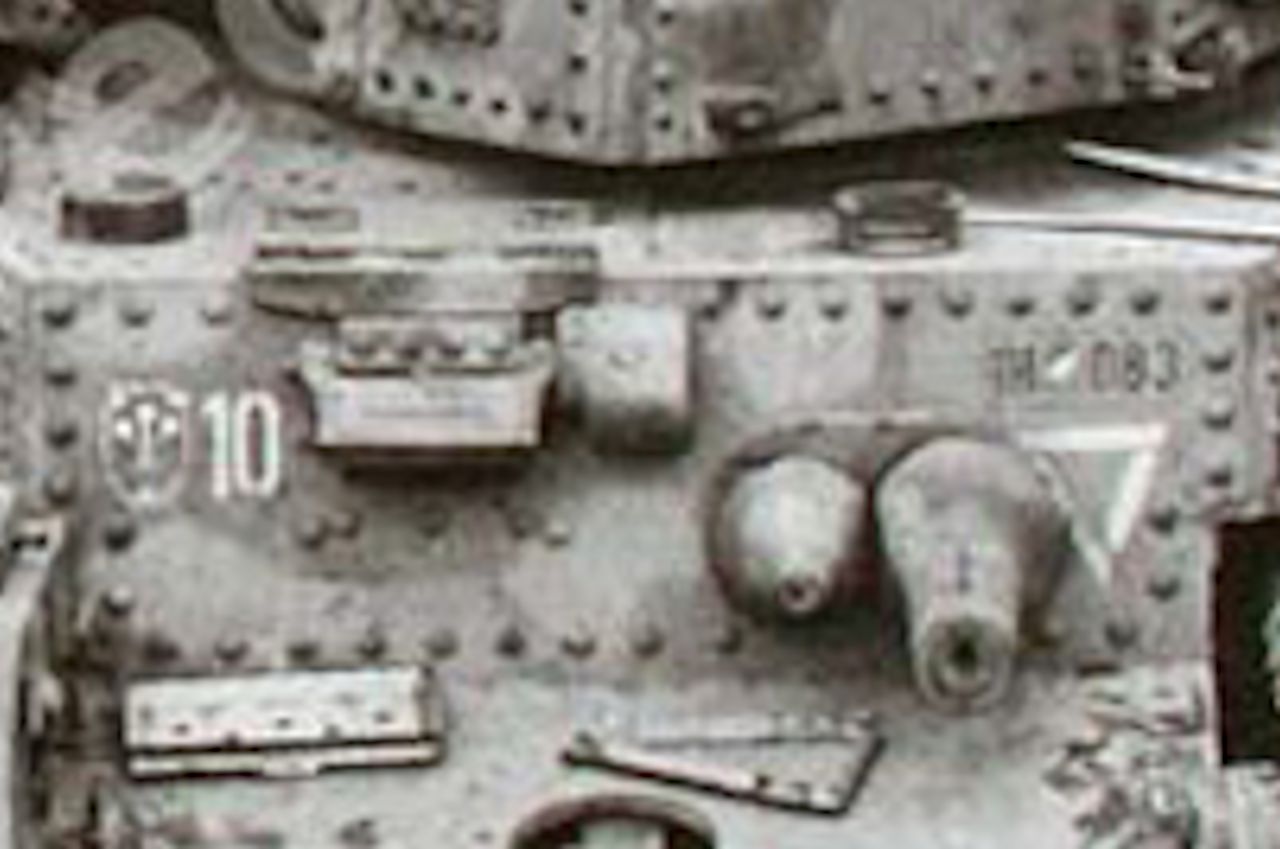




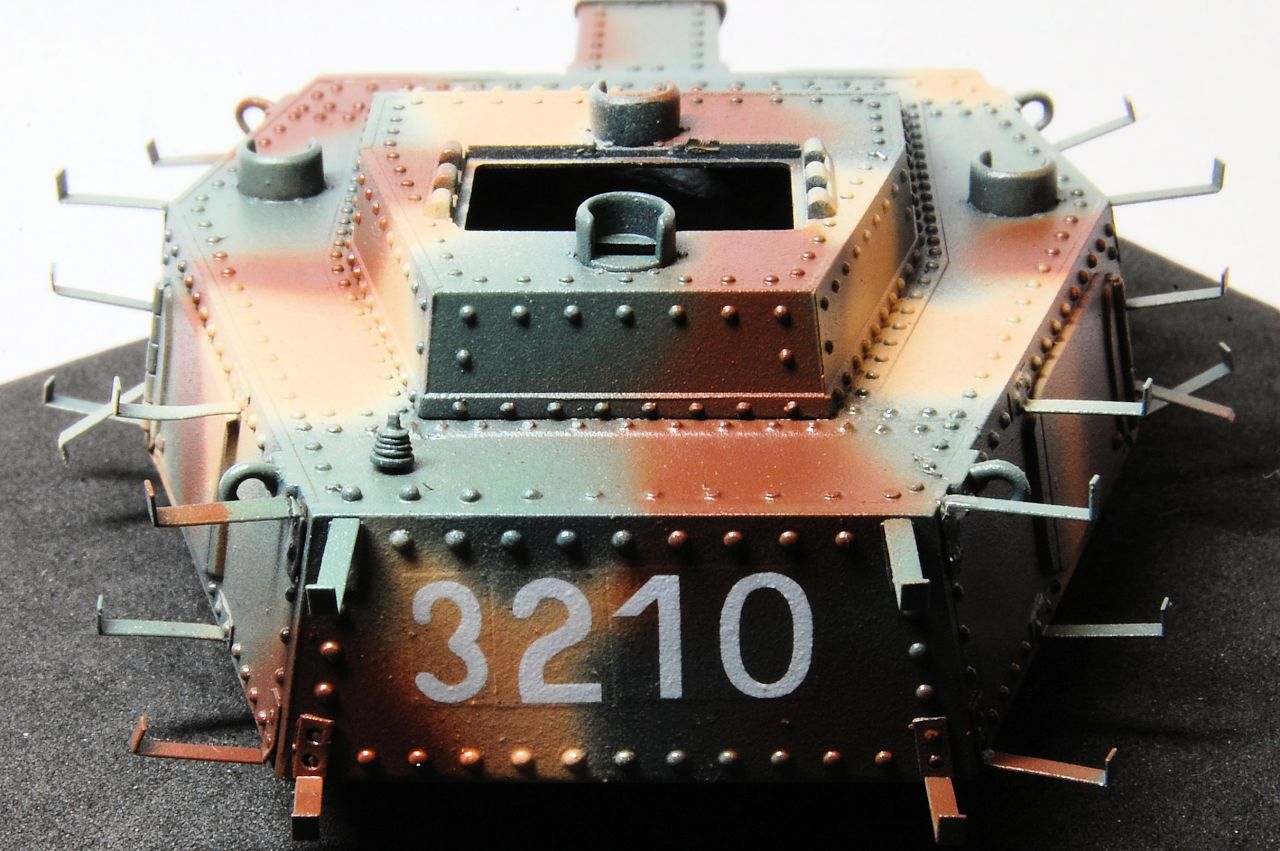
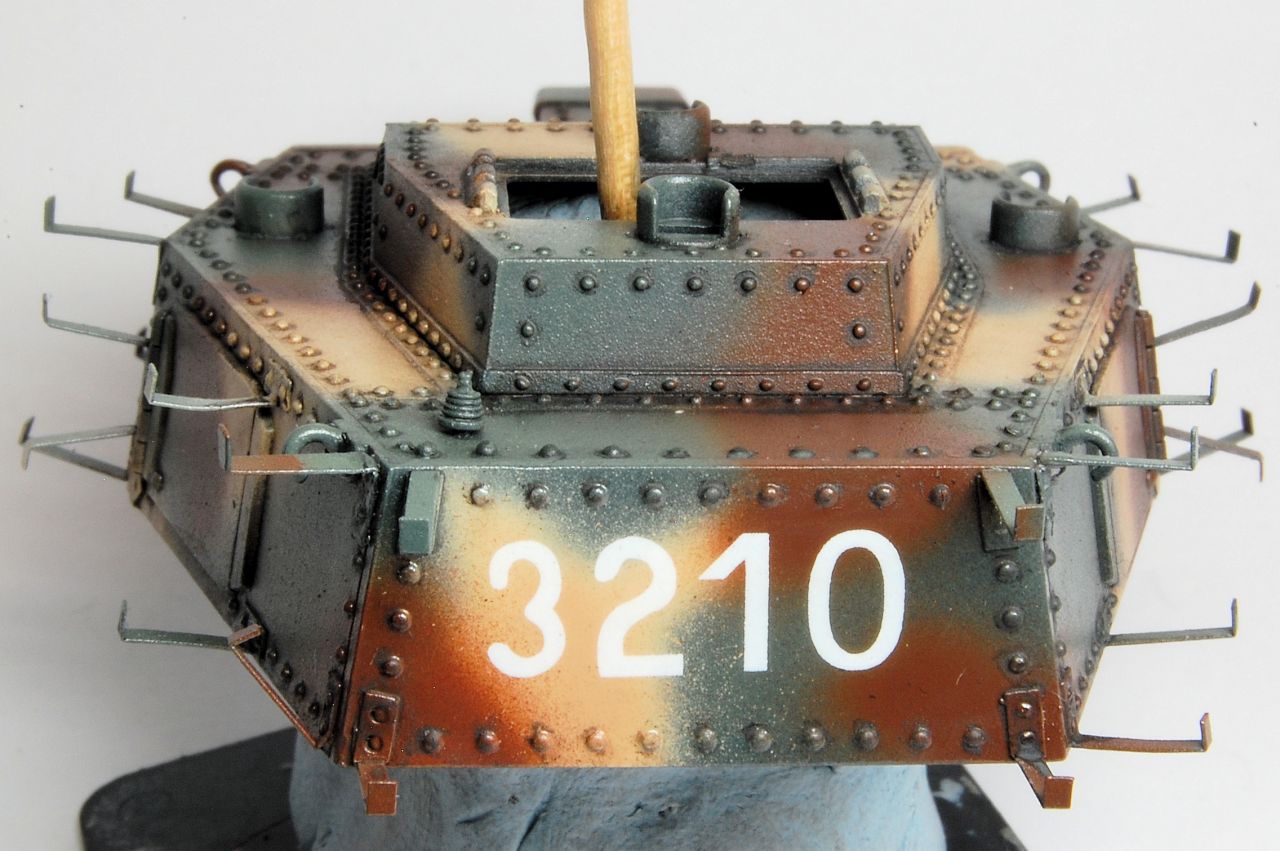















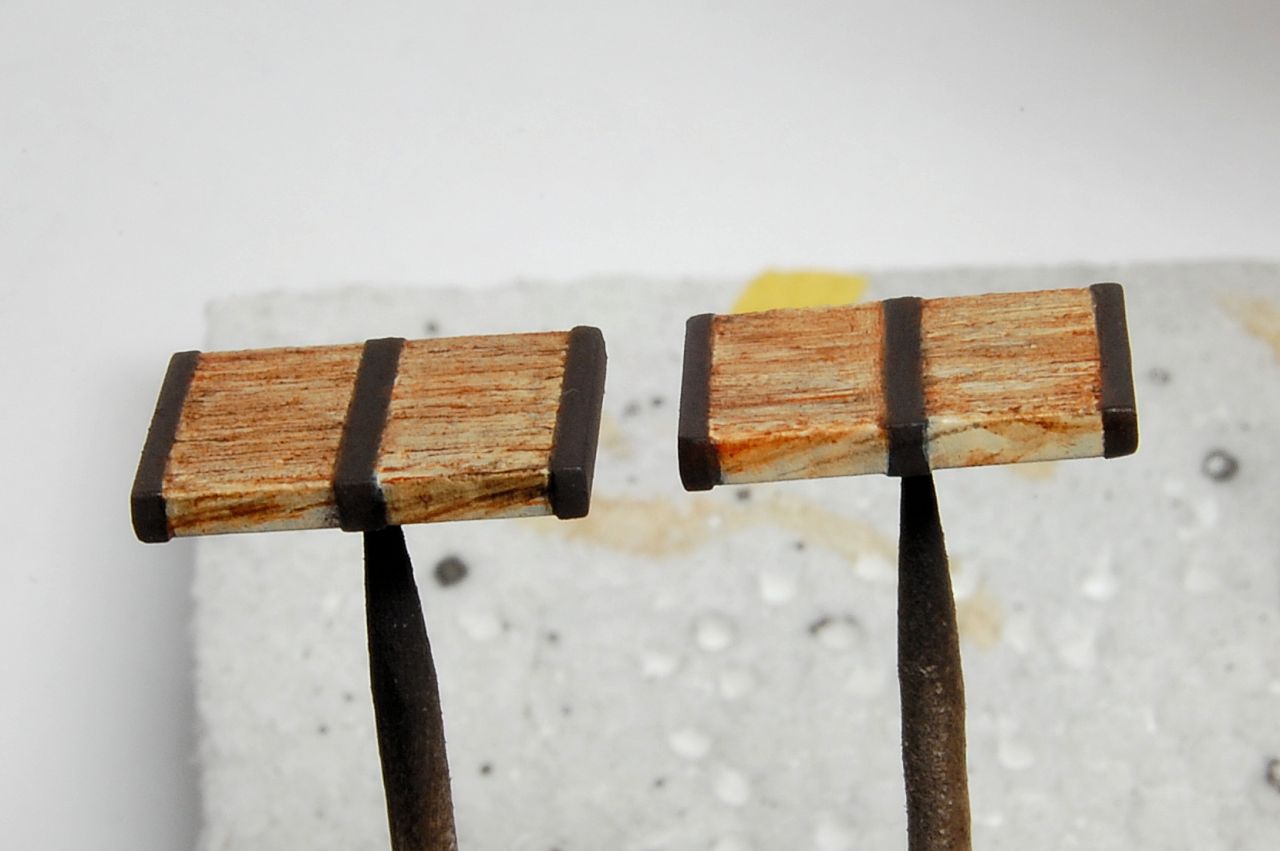


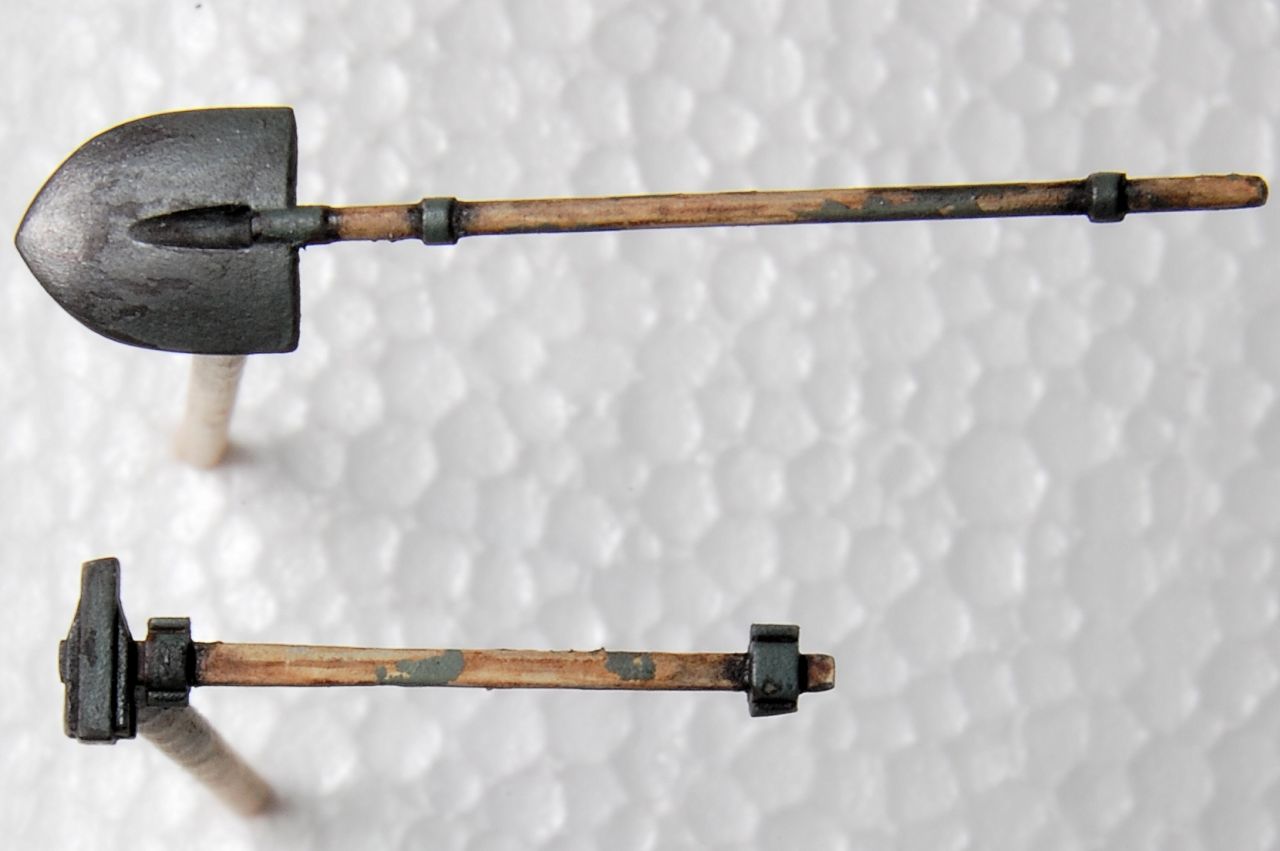
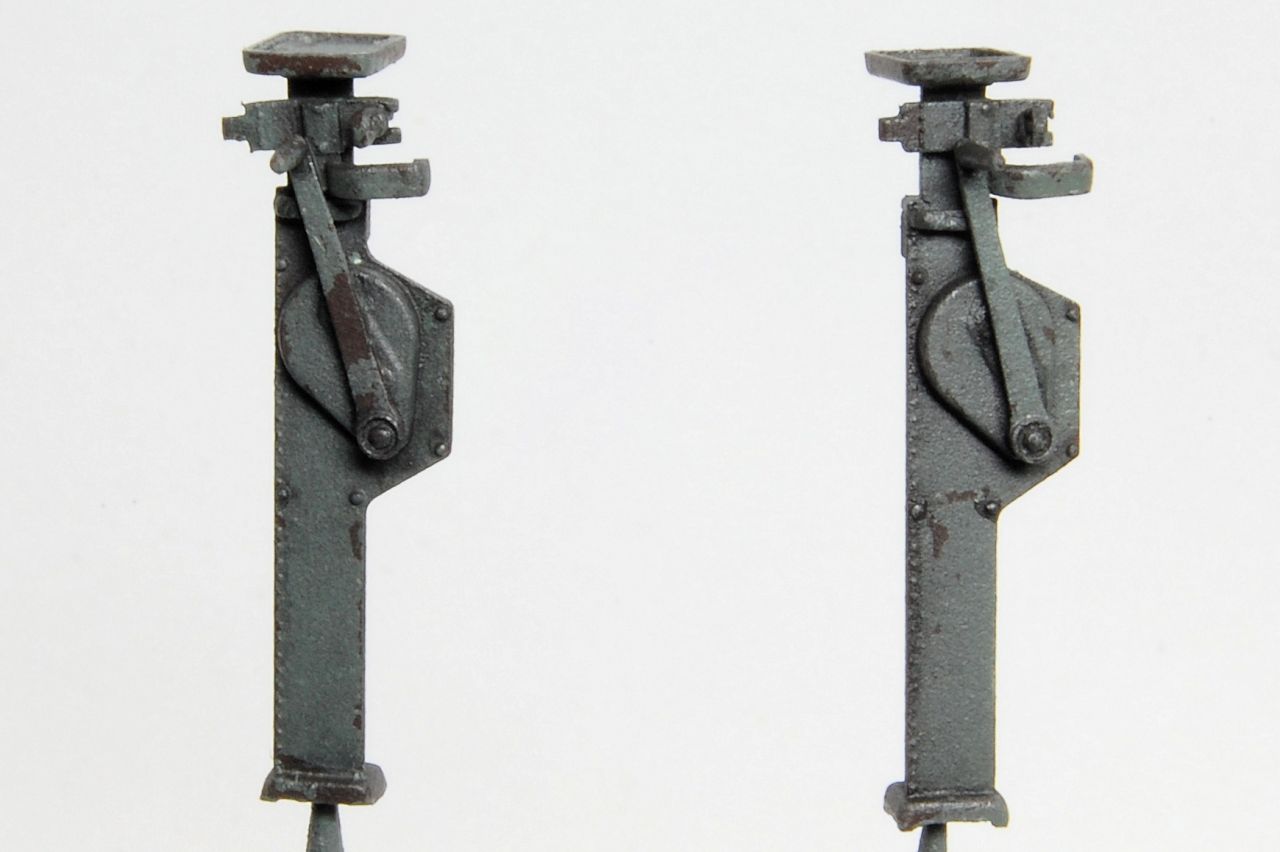
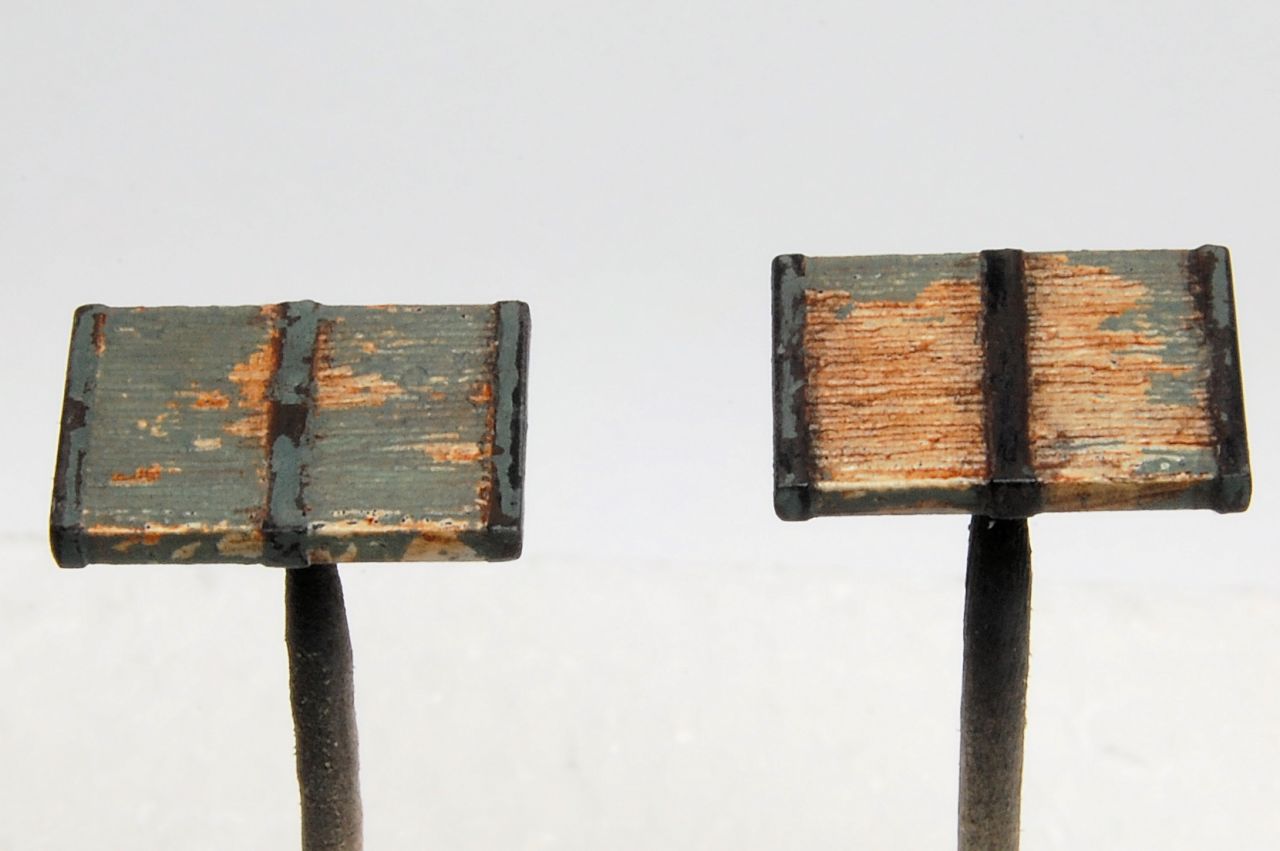




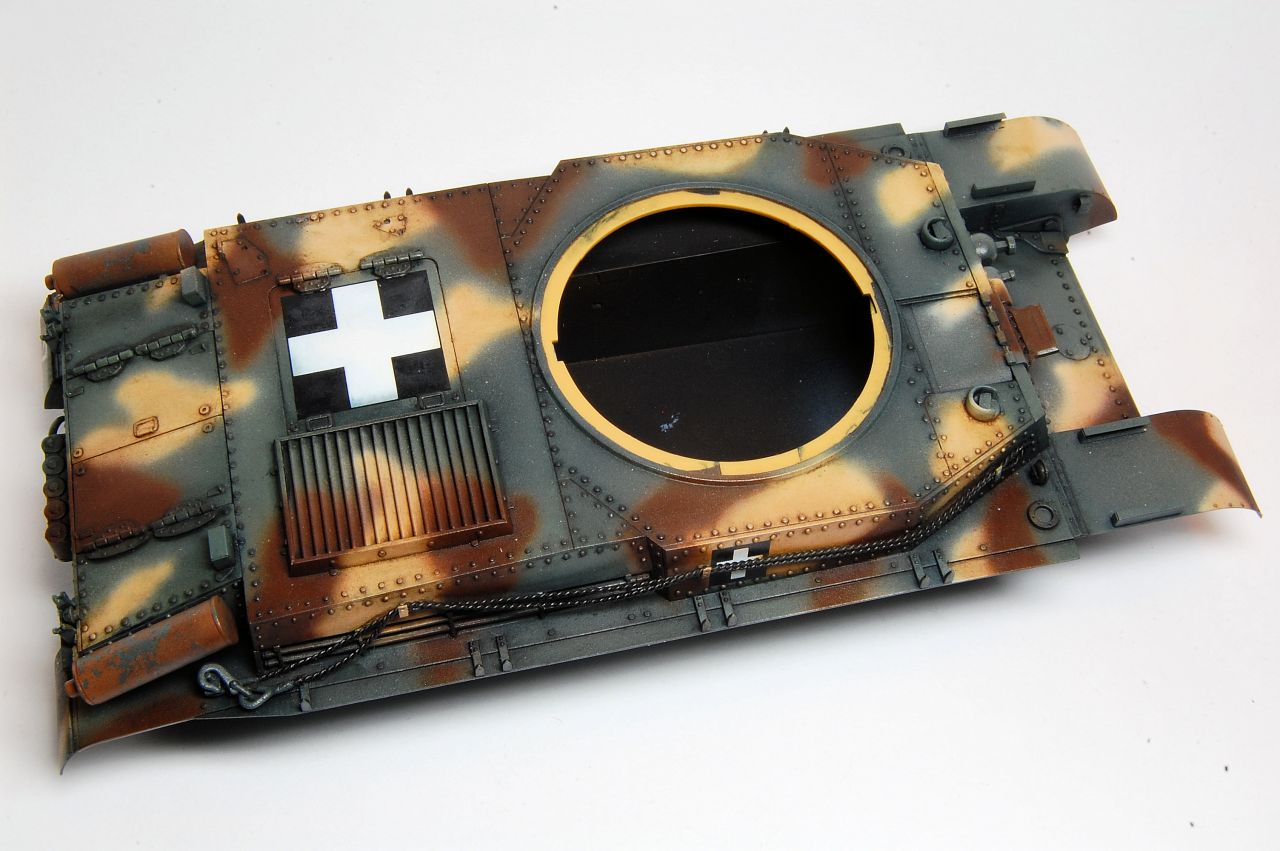

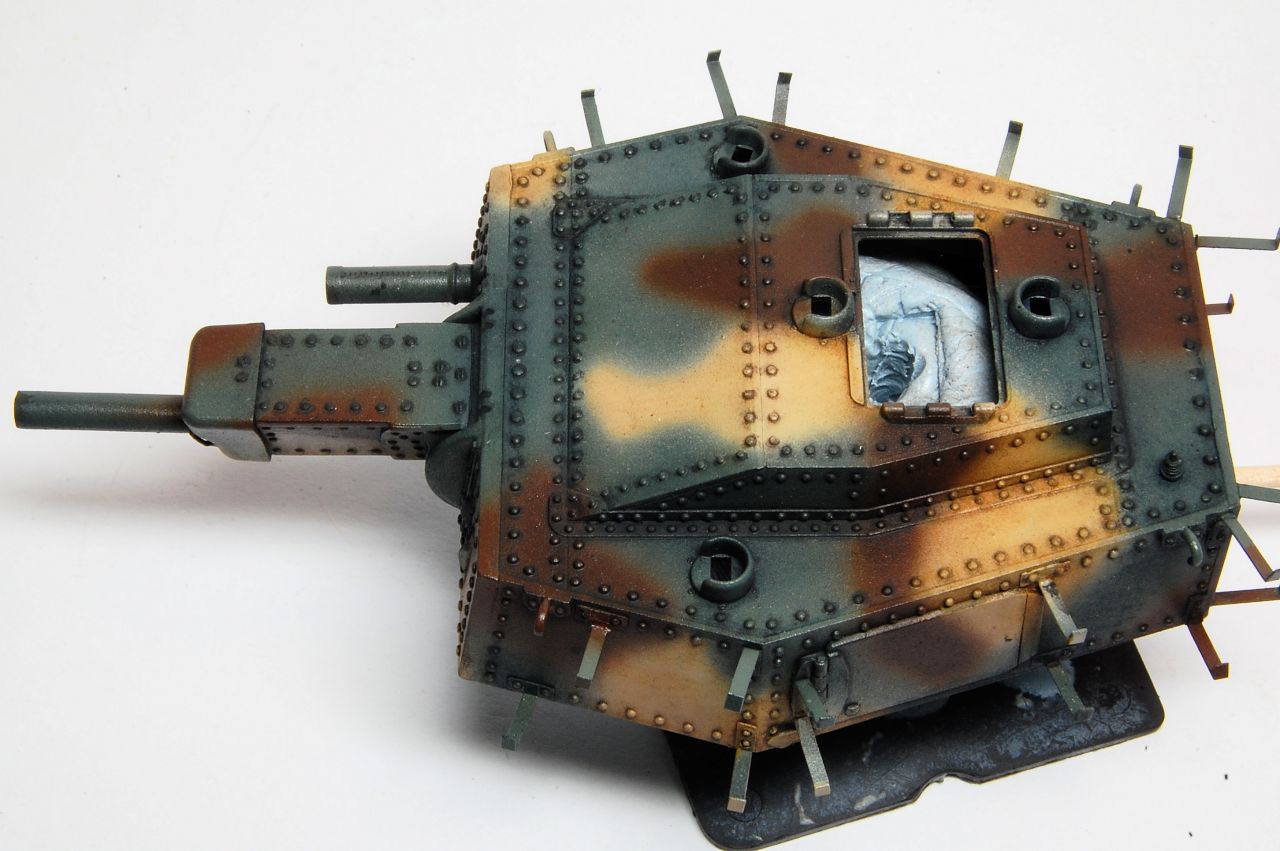
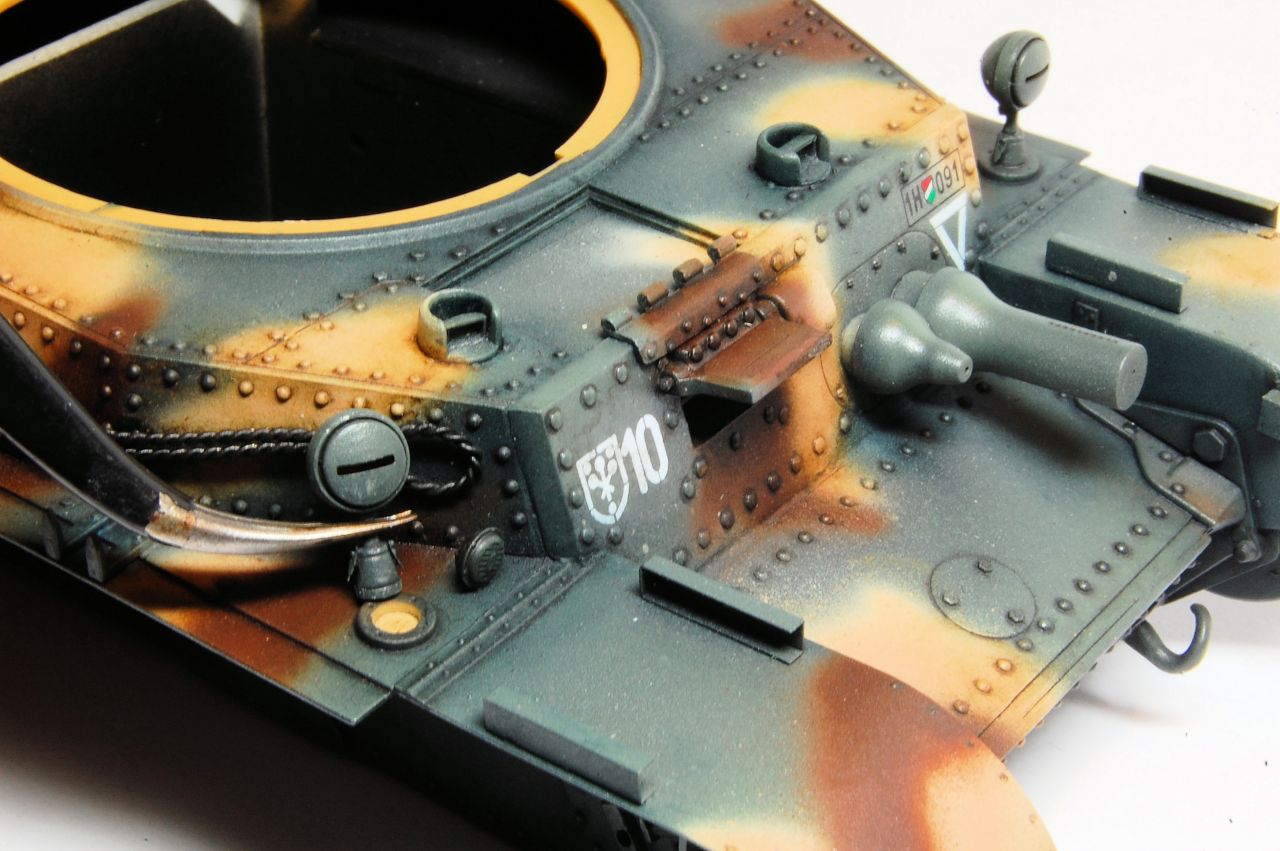
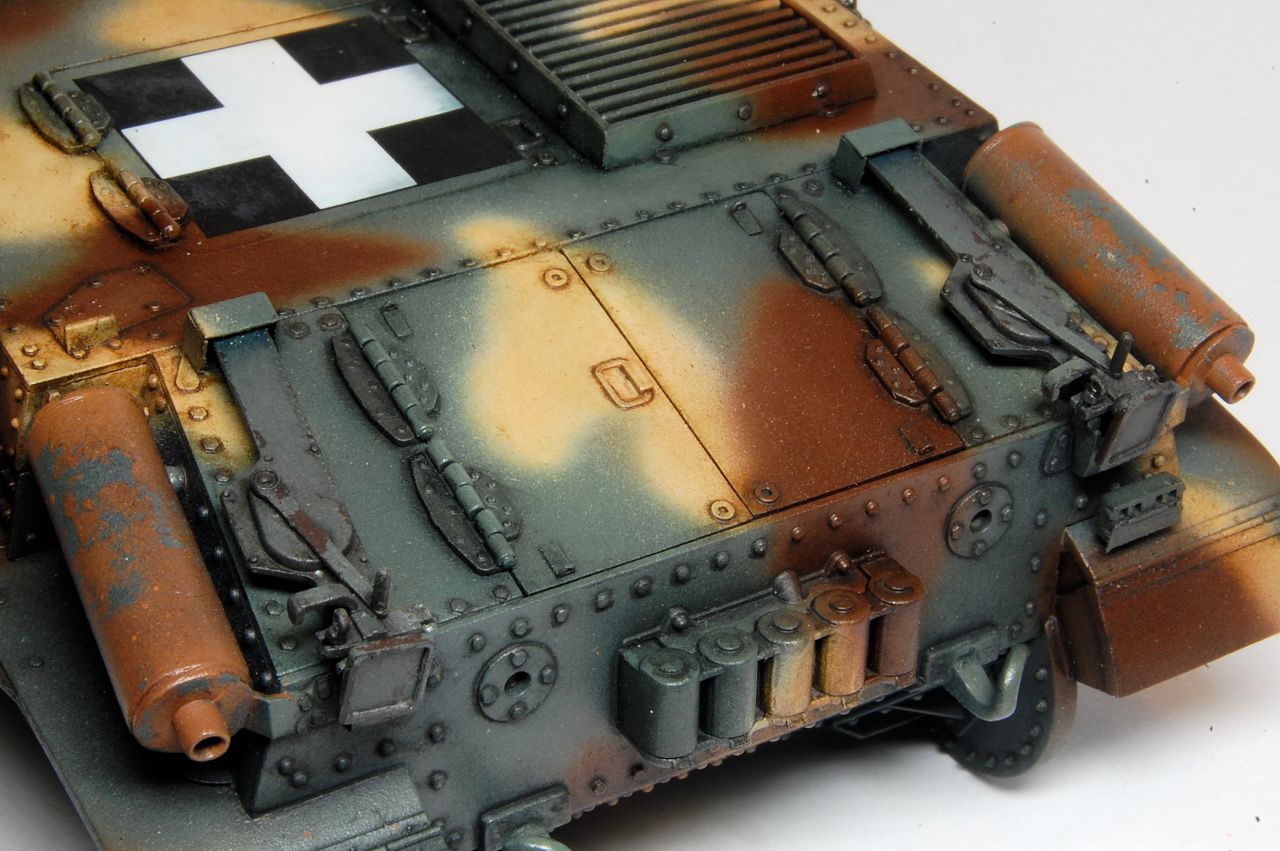
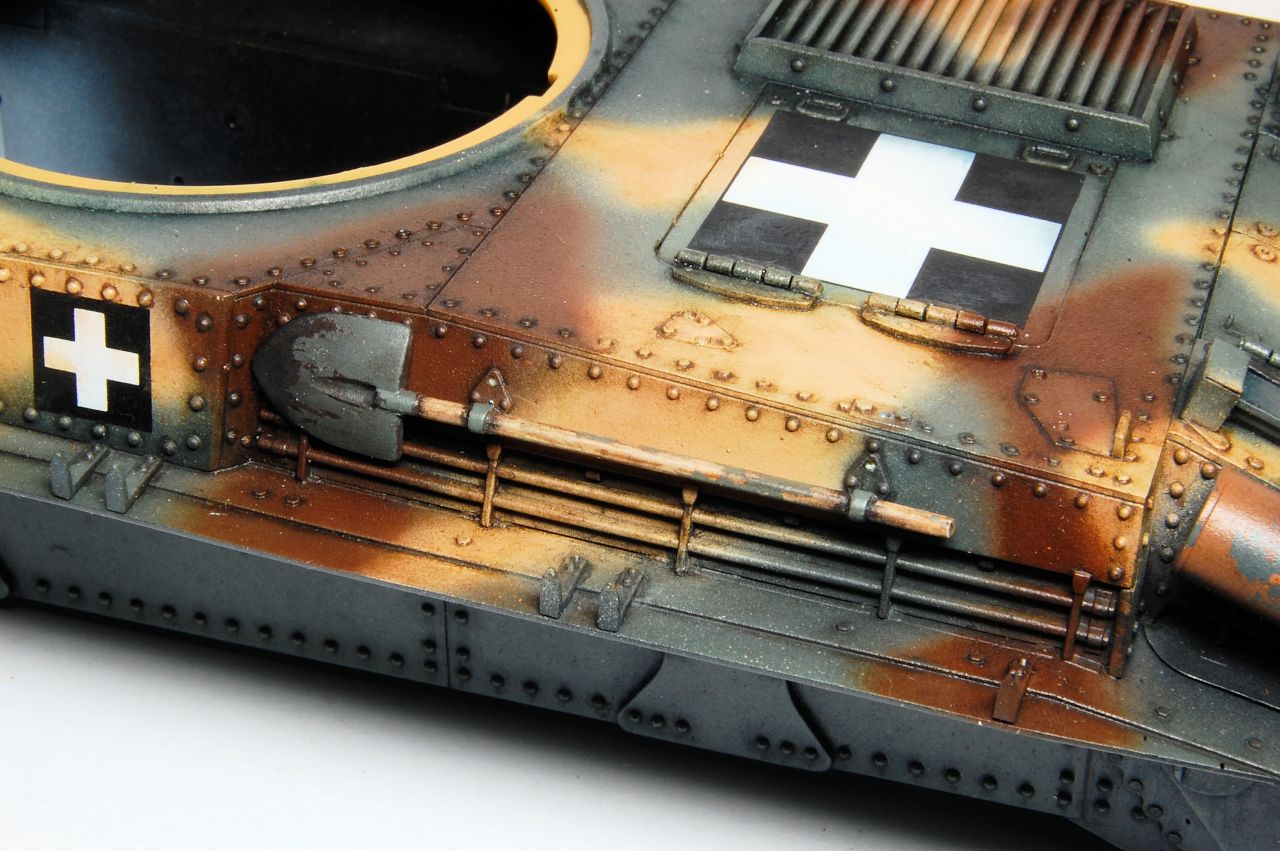

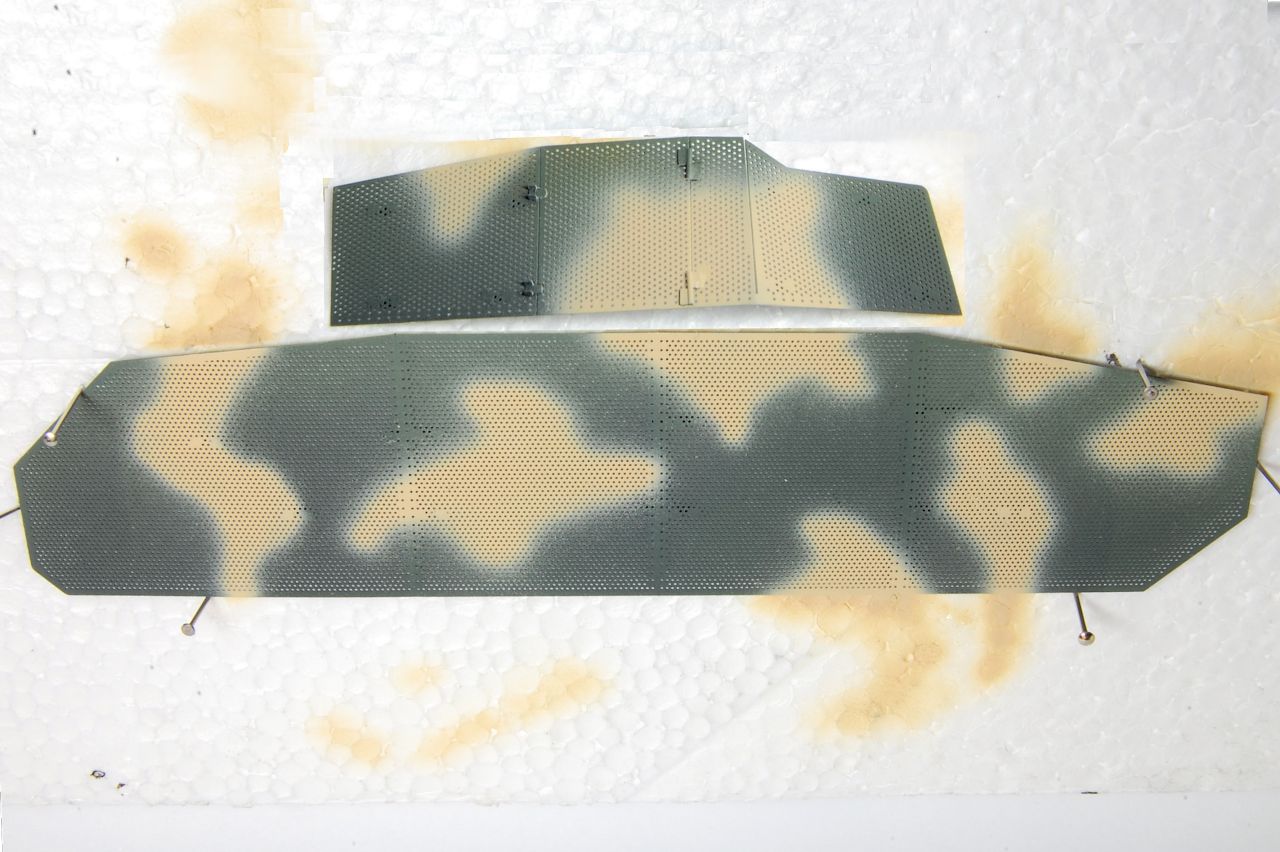






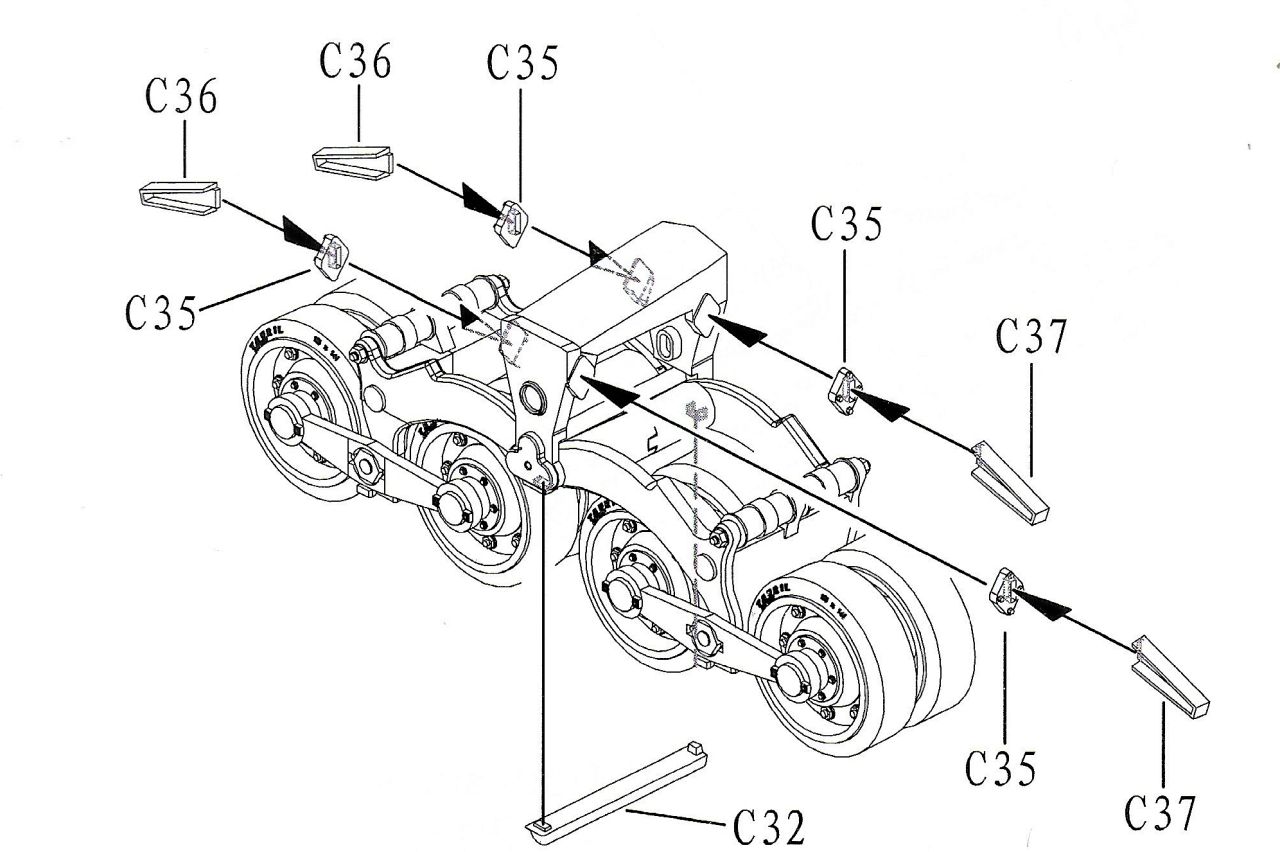
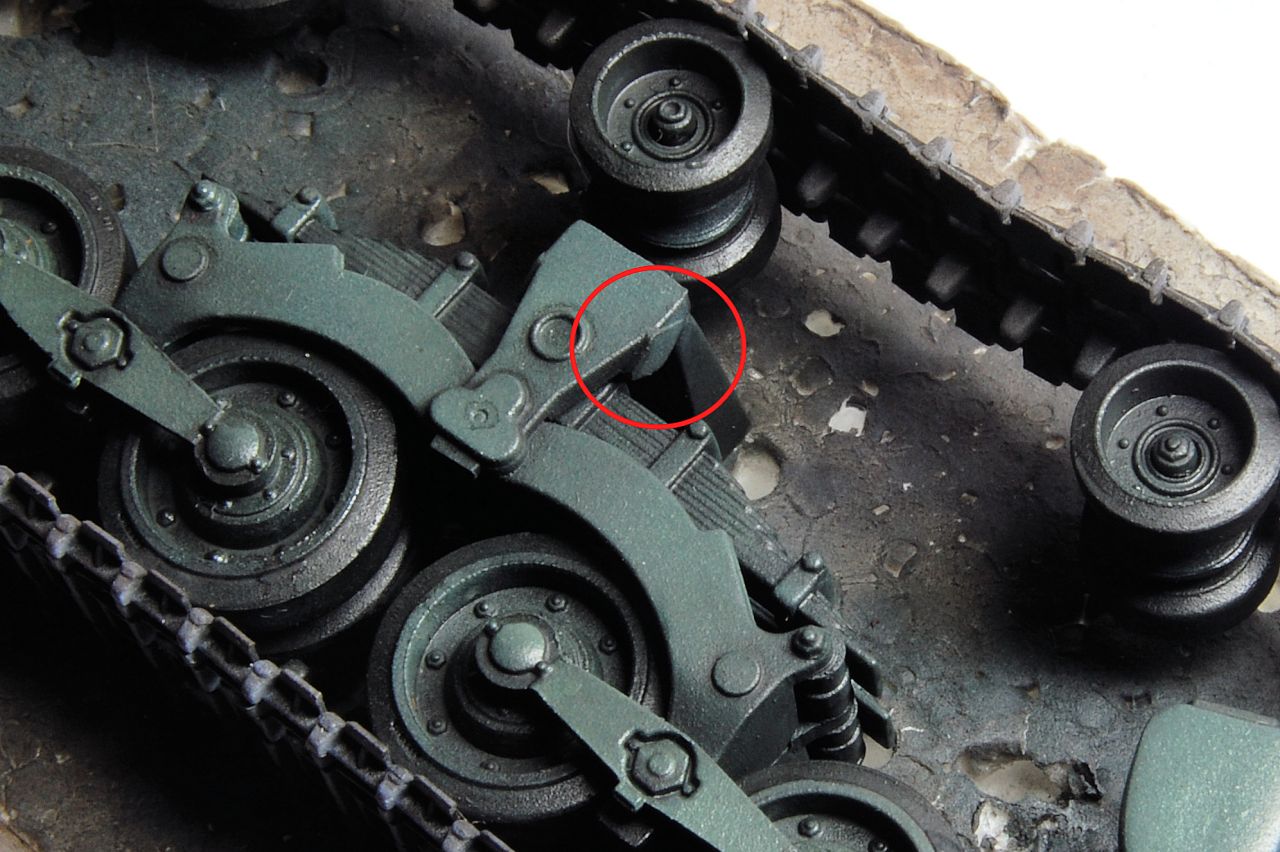





 ) Once set I'll blend them in at the same as weathering the side skirt armour.
) Once set I'll blend them in at the same as weathering the side skirt armour.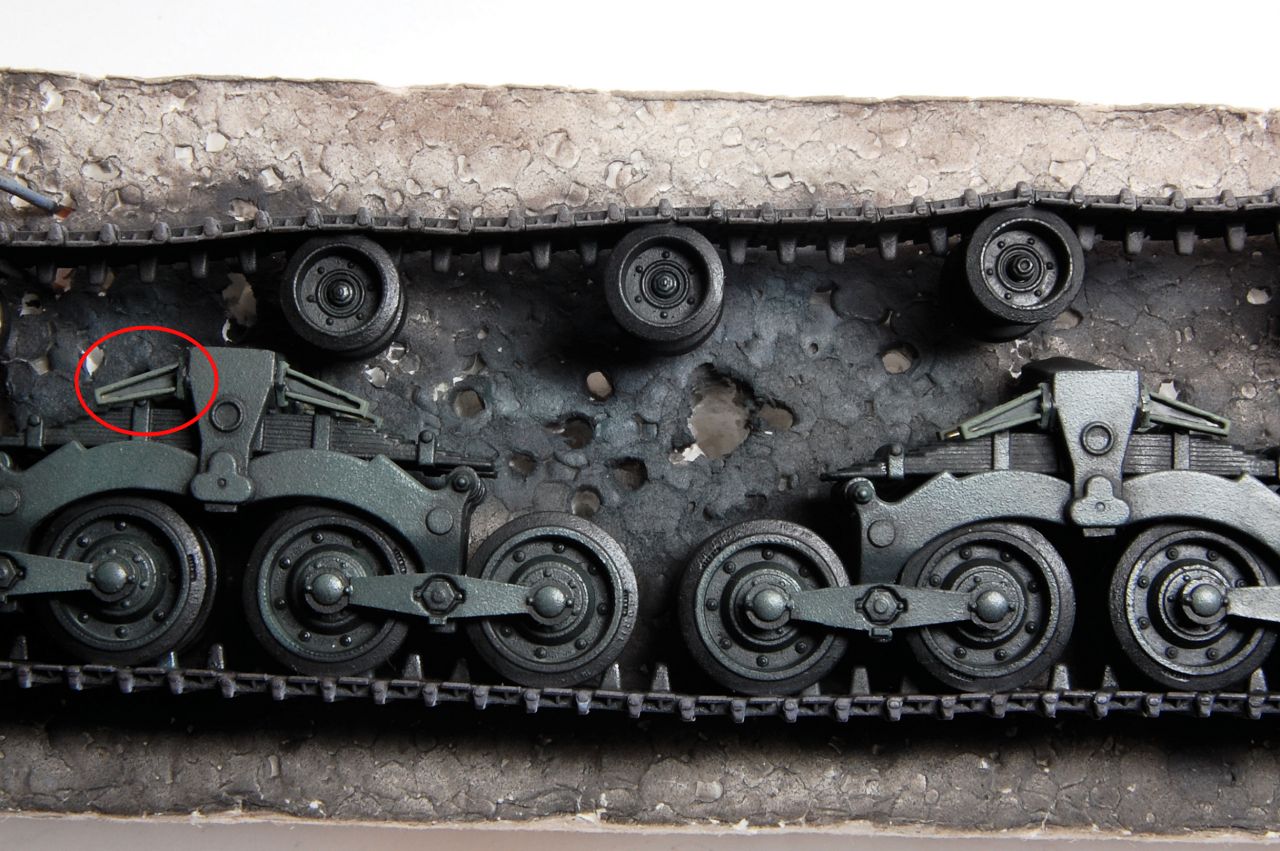







 They are there, just hidden by the overlapping plate.
They are there, just hidden by the overlapping plate.
